Last updated: 7th January 2022
Our whistle stop self-guided tour of Australia continued and after touring Sydney next up was Ayers Rock, or by its aboriginal name Uluru. We were incredibly excited to see one of the world’s greatest wonders. In this post we’ll show you our Uluru itinerary for 2 days and the best things to do in a short time.
Table of Contents
Arriving at Ayers Rock Airport
We transferred by planes from Sydney via Alice Springs and got an amazing view of Australia’s famous desert rock as we came in for landing at Connellan Airport (Ayers Rock airport). It was a rather bumpy flight from Alice Springs, Phil compared it to like riding the Big One rollercoaster in Blackpool! Stepping out of a plane the extreme dry heat hit us (39ºC) and gave us a taste of what was to come. We quickly headed straight to the air conditioned arrival hall to get our hire car for the next 2 days in Uluru. The airport looked like it had an airplane graveyard too, which was an eerie sight of abandoned unmarked planes parked in the desert.
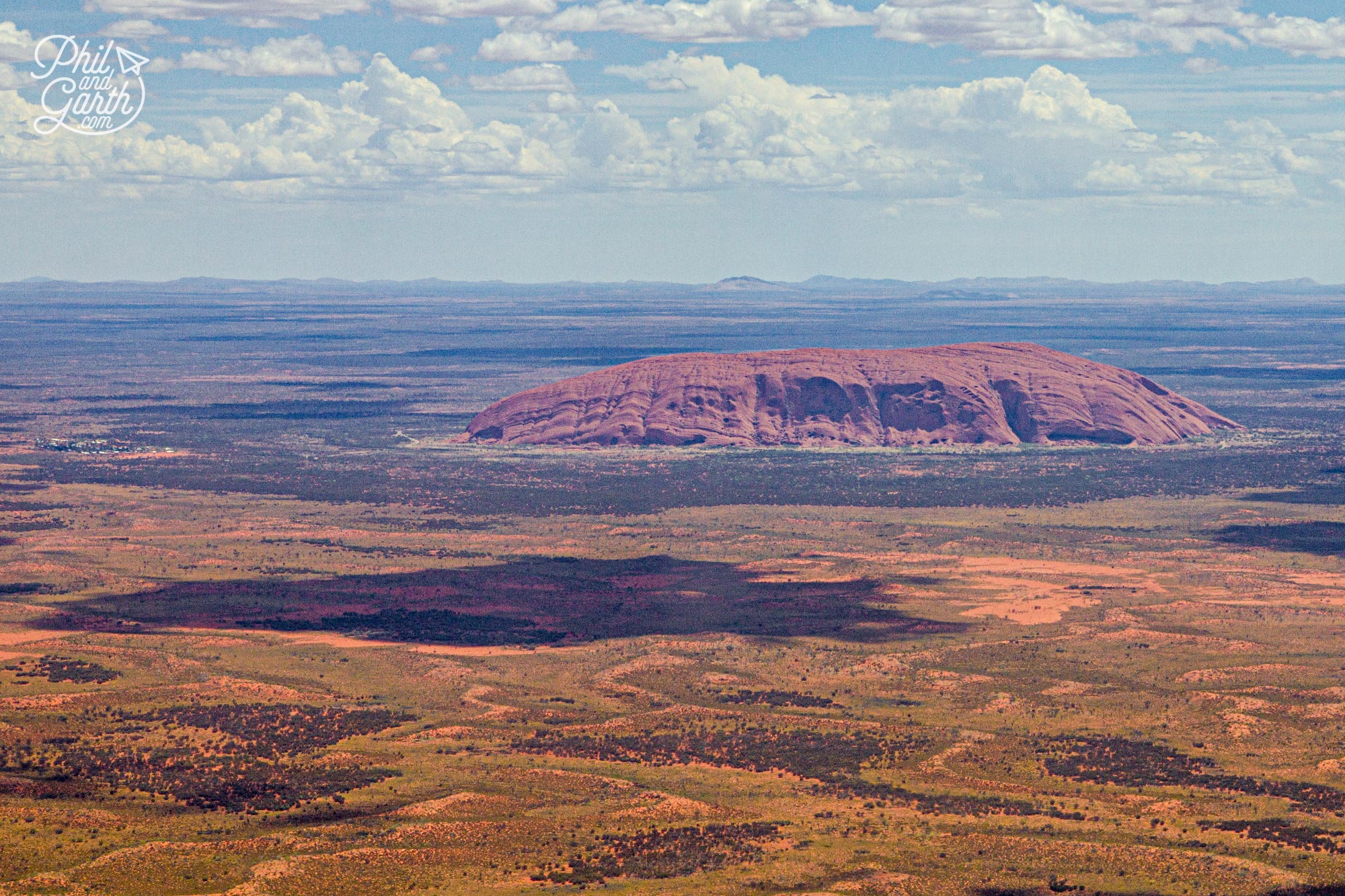
Our fabulous view of Uluru and the town of Yulara as we came into land
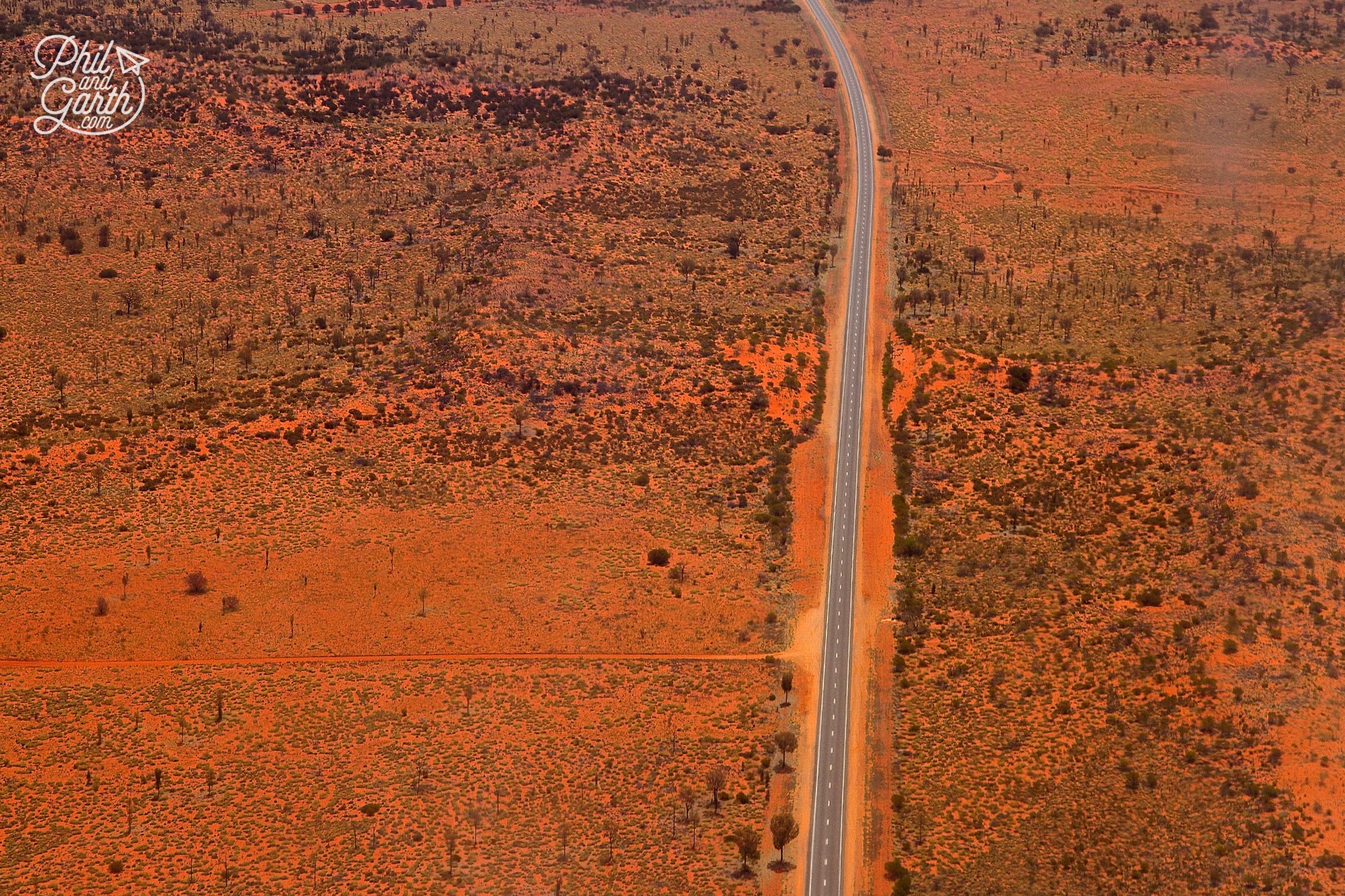
The wild Australian outback as seen from the air
Yulara – Ayers Rock Resort
Garth drove us to our hotel – The Outback Pioneer just 9 miles from the rock. It’s situated in the town of Yulara, best known as Ayers Rock Resort, a strange place where you realise the ‘town’ is actually one huge resort comprising five different hotels from 5 stars to a campsite, with shops and restaurants – so you basically have no choice, but to go to what the resort is offering, as it’s all owned by the same company. Our hotel was the cheapest in Yulara, the room was basic, but it was comfortable and the hotel had a small pool, which we used to cool down. Garth has a phobia of cockroaches and there were a few outside our front door, so we stuffed a towel under the door gap at night, just in case!
The hotel catered for the masses, including many backpackers, but it’s do it yourself BBQ was excellent and good fun. You queue up at the meat counters and buy what you fancy we chose Kangaroo, Emu and Crocodile sausages and steaks, you then head over to the BBQ’s and choose one, there are 10 or so and there was always one free, so you can tick off that Aussie barbie!
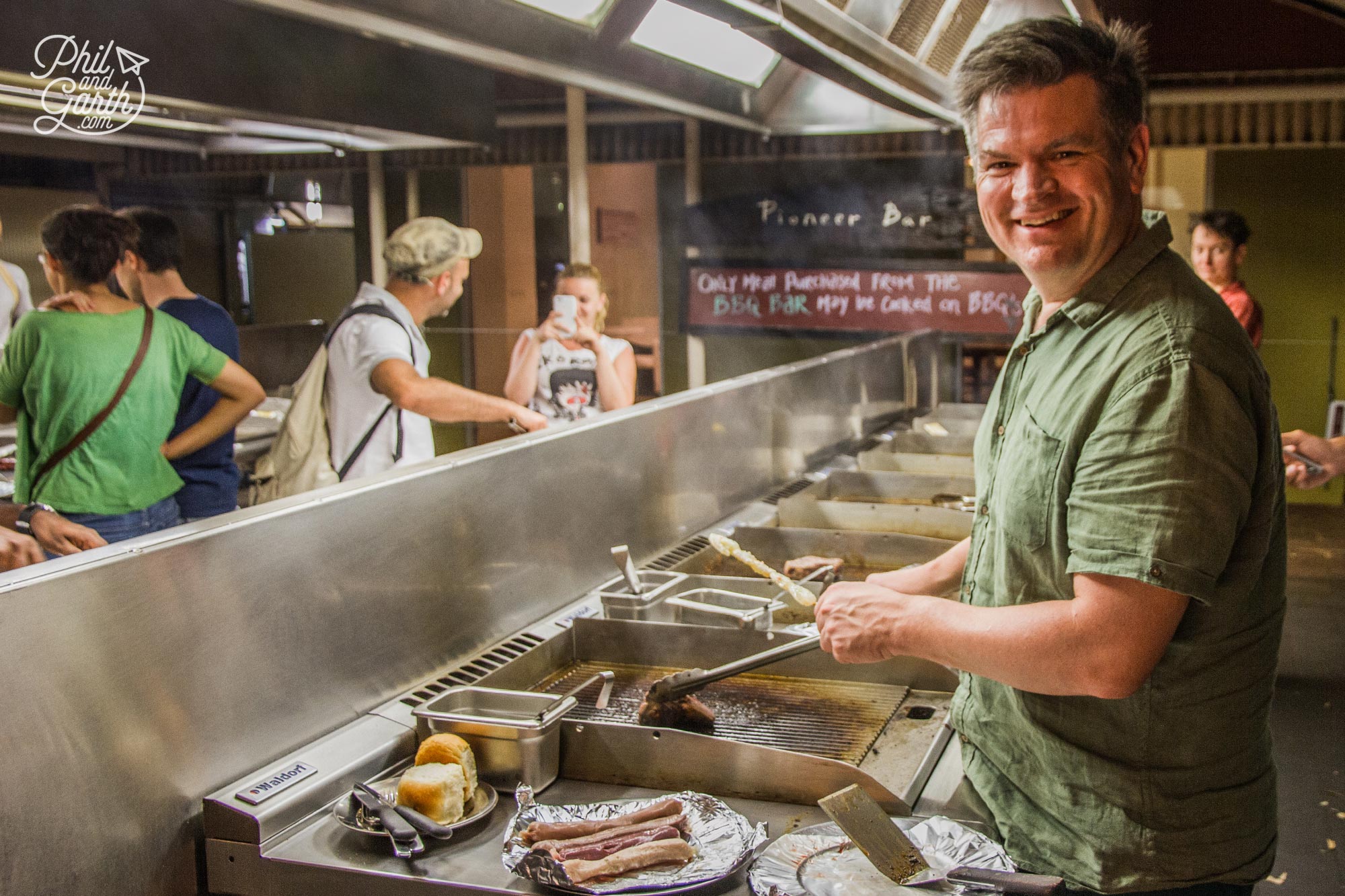
Phil using the Outback Hotel’s DIY BBQ
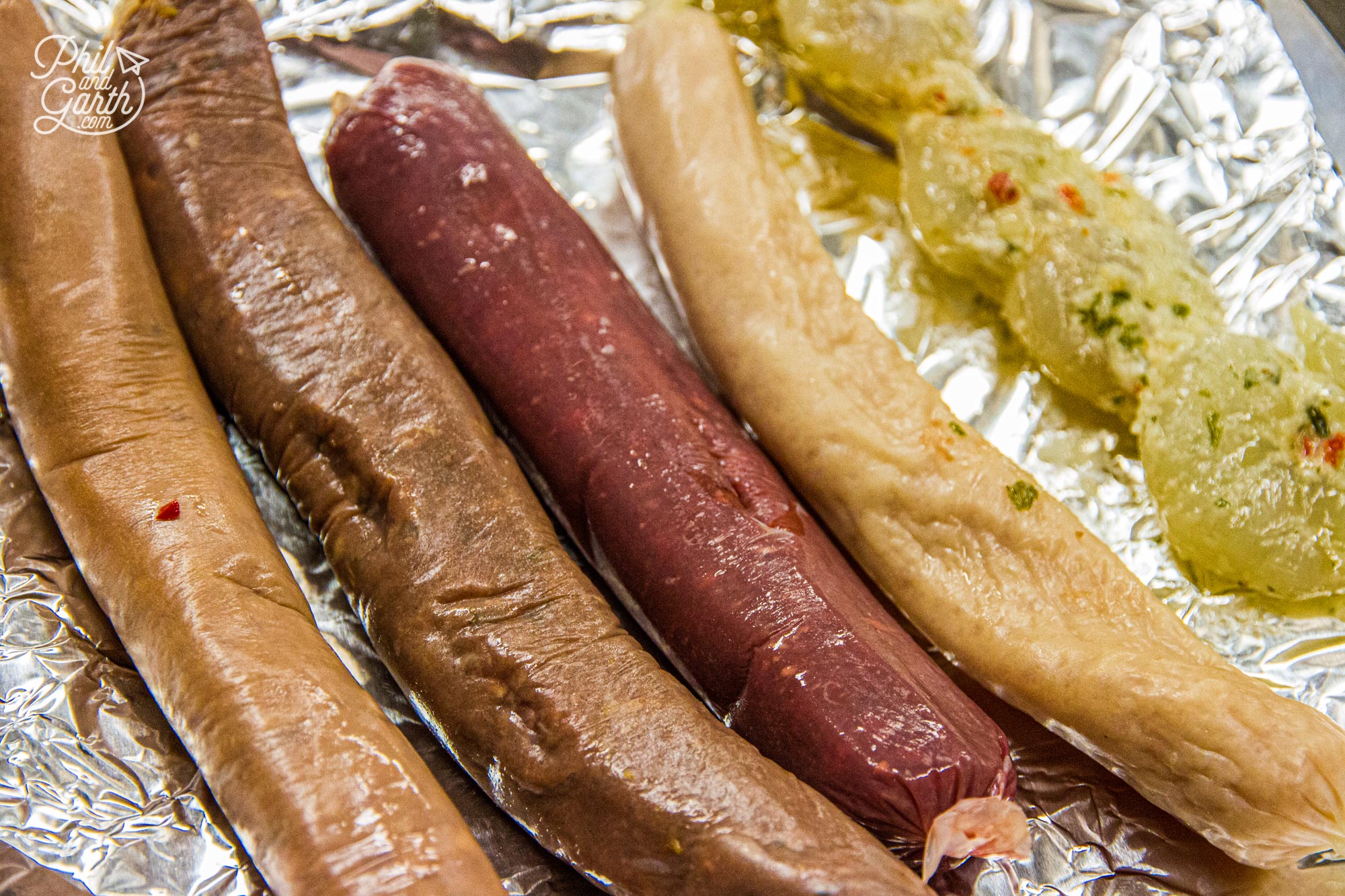
Ready for grilling Kangaroo, Emu and Crocodile sausages
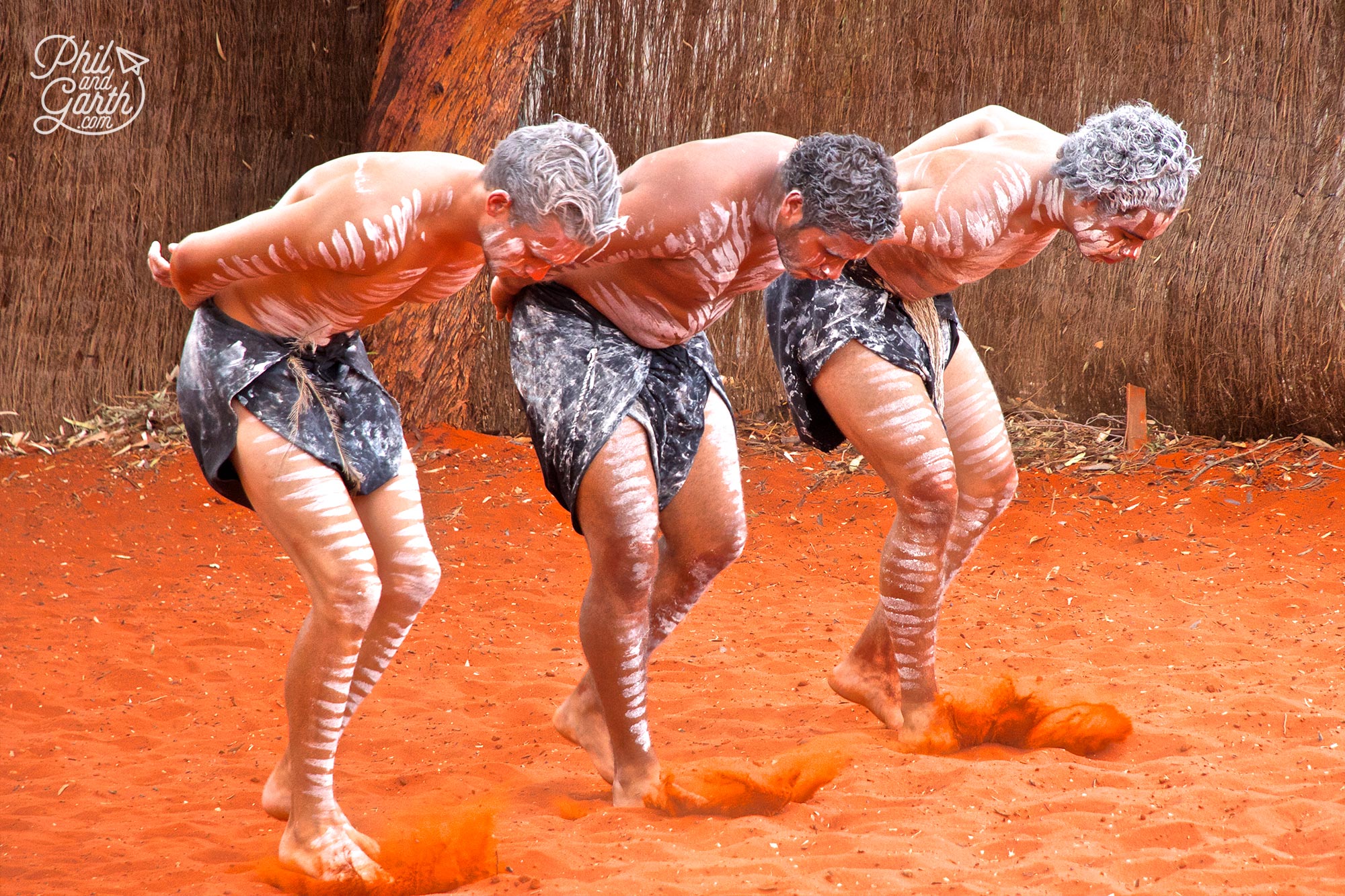
Indigenous ‘Wakagetti’ dance everyday at 4pm at the Town Square lawn of Ayers Rock Resort
Uluru Itinerary
Day 1: Uluru-Kata Tjuta National Park
For the first day of our Uluru itinerary we drove out to the entrance gate of the Uluru-Kata Tjuta National Park. To enter the park you need a ticket which we bought in advance online. The ticket costs AU$38 it is valid for 3 days to explore this UNESCO World Heritage Site.
Seeing Uluru is awesome, you really can’t comprehend the sheer size and beauty of the rock from TV or pictures, until you get up close, a bit like seeing the Grand Canyon for the first time. You also realise just how remote Uluru is the middle of the desert, the nearest town of Alice Springs is 280 miles away.
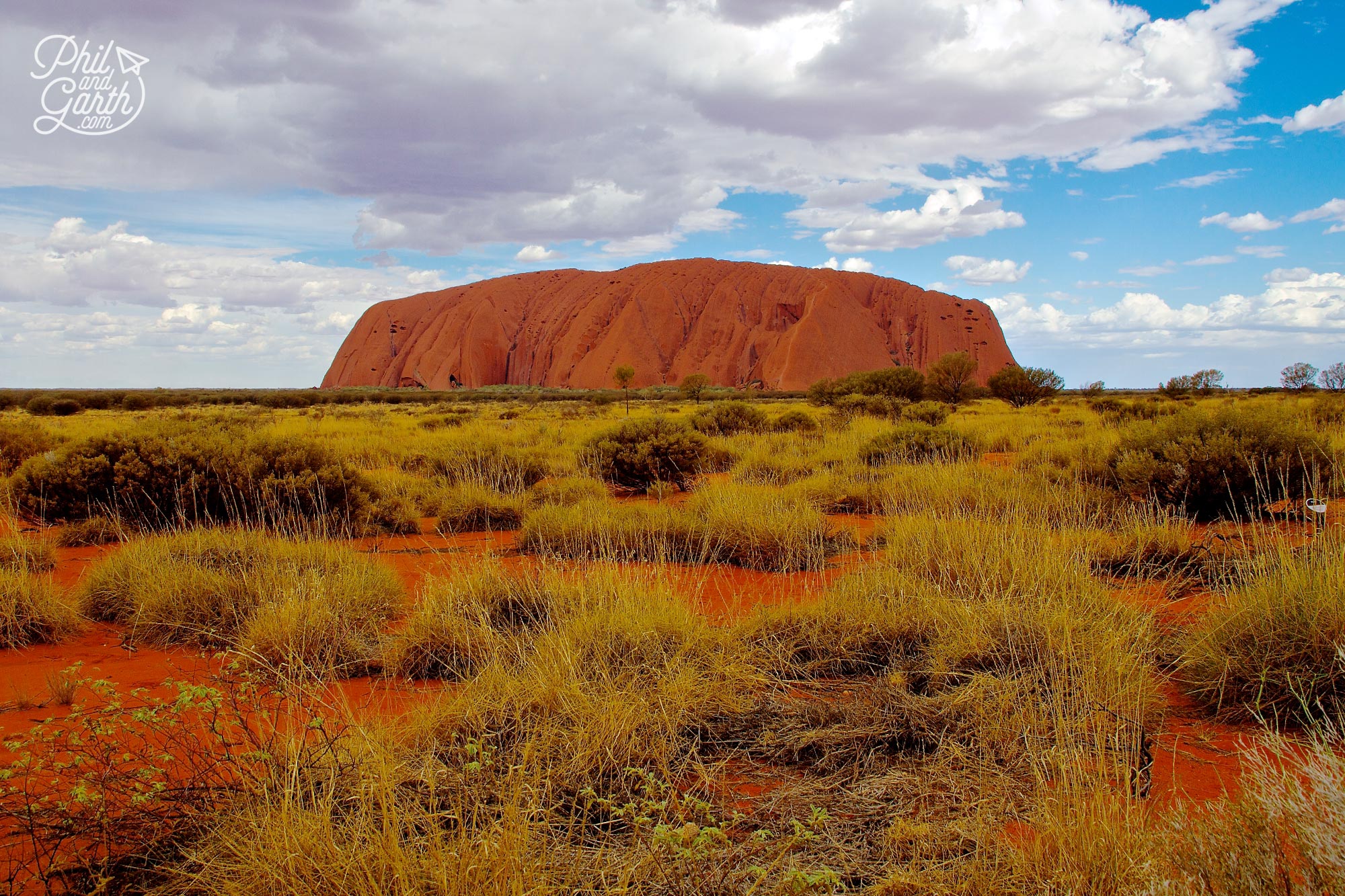
Day 1 of our Uluru itinerary and we start with a fabulous view of Uluru
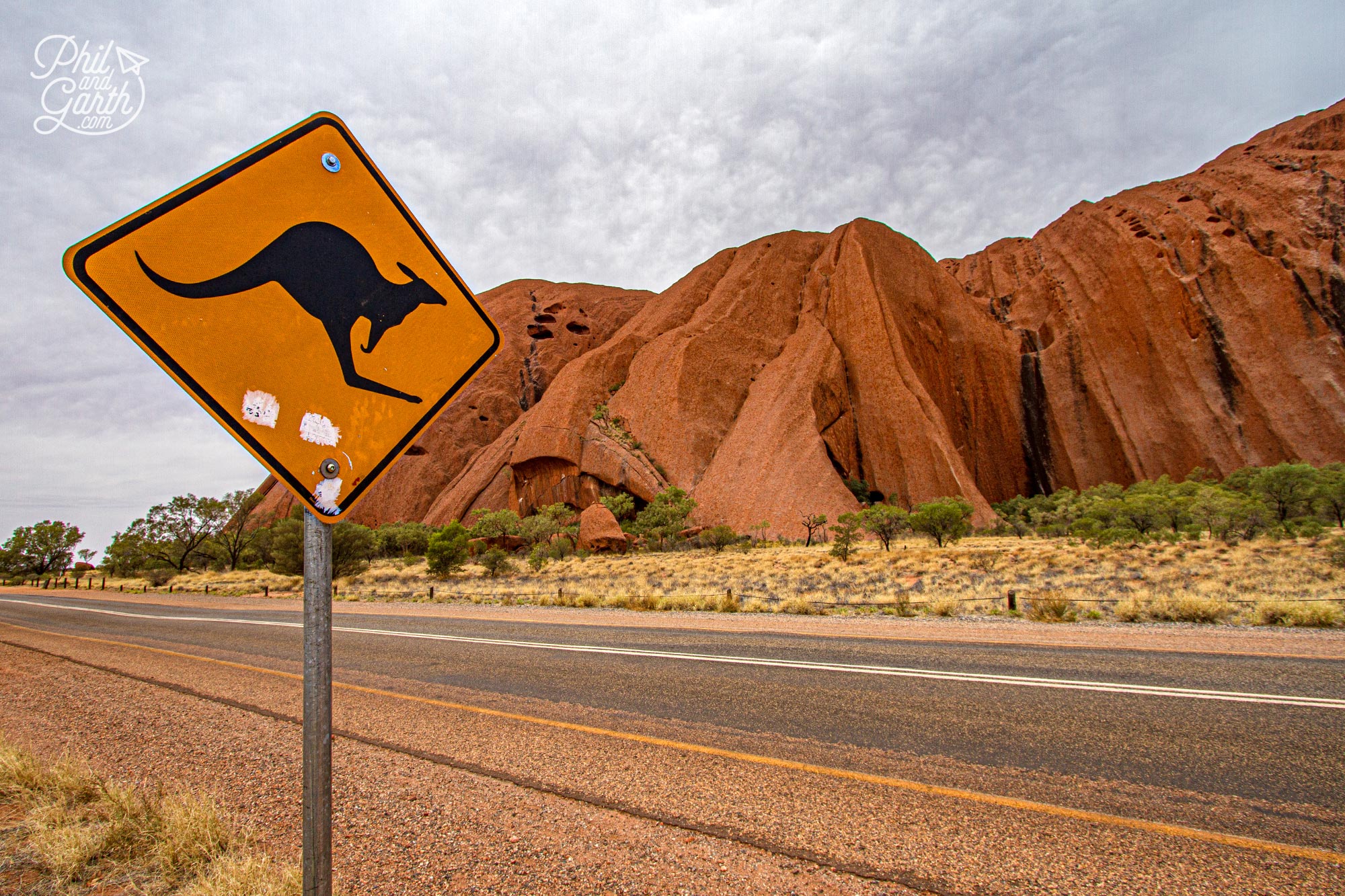
Driving around Uluru-Kata Tjuta National Park is really easy
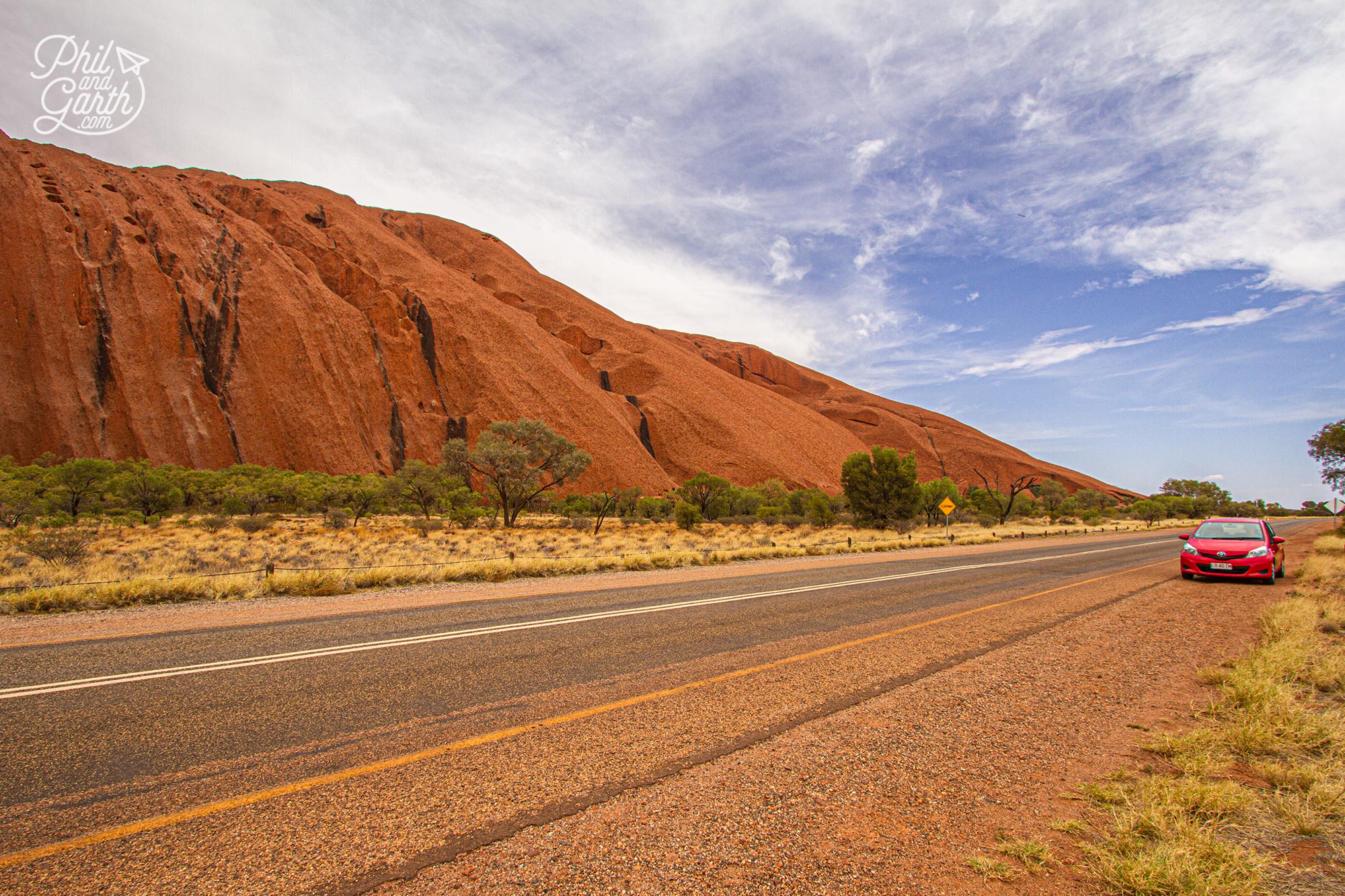
Our delightful little hire car we used for our 2 days in Uluru of sightseeing
Driving around the park is really easy as your ticket includes a map with the various viewing points. There are signs to look out for camels but we didn’t see any. We went in low season in January which means extreme heat and Outback flies, oh my gosh, the flies! I’m not sure they all come from because the place isn’t dirty at all, but they are absolutely everywhere. We had read about the issue of flies and bought face nets off eBay before we came. You can buy them from the shop in Yulara but if you arrive in the evening it may not be open. Do you really need the nets? OMG YES! they’re not attractive, but be warned without them the flies will be up your nose, in your ears and you’ll have a miserable experience, we took them off for a couple of photos, but they went straight back on as soon as the shutter had closed!
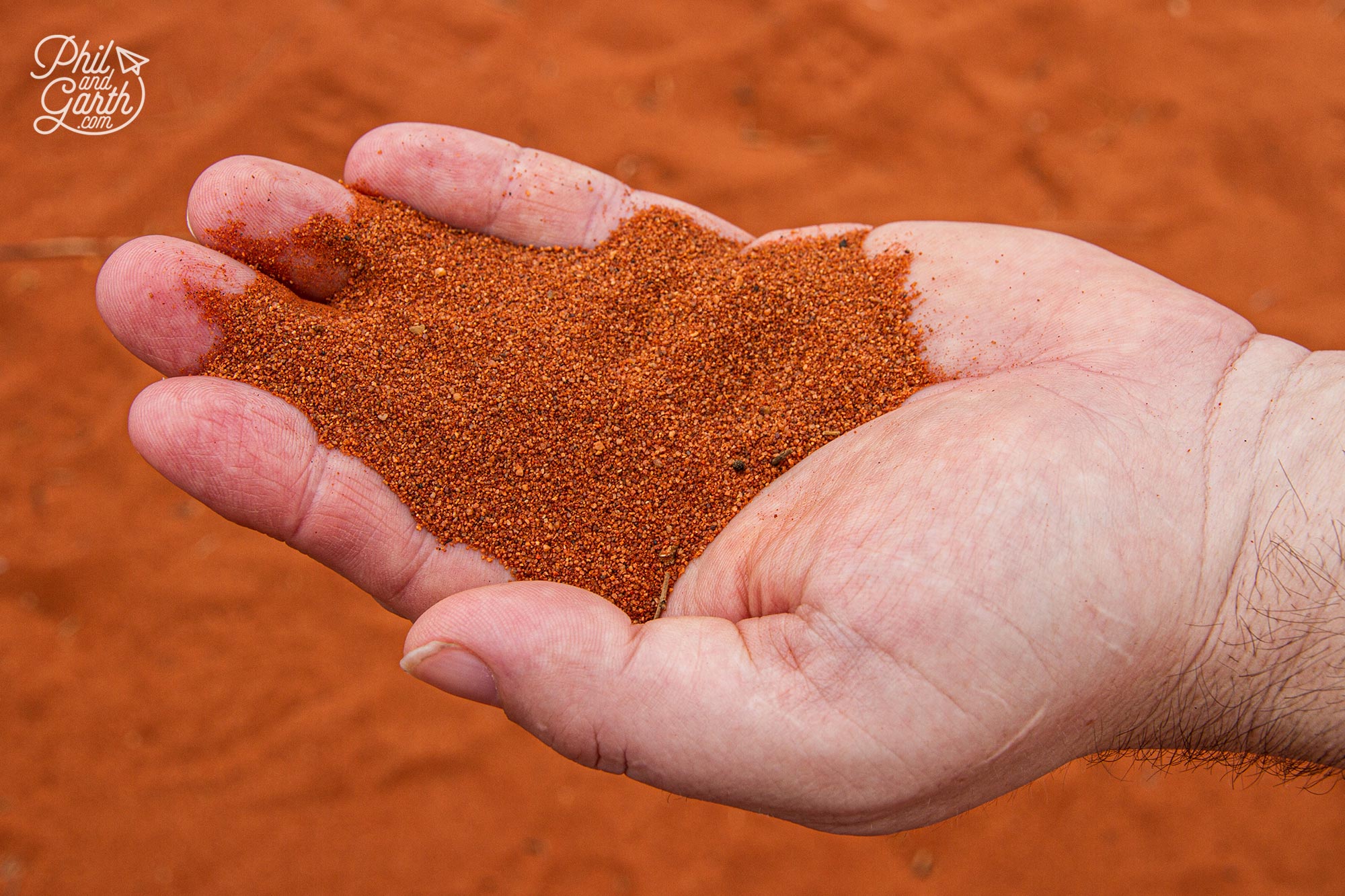
The rock and sand is red because of the iron in the rock which turns rusty
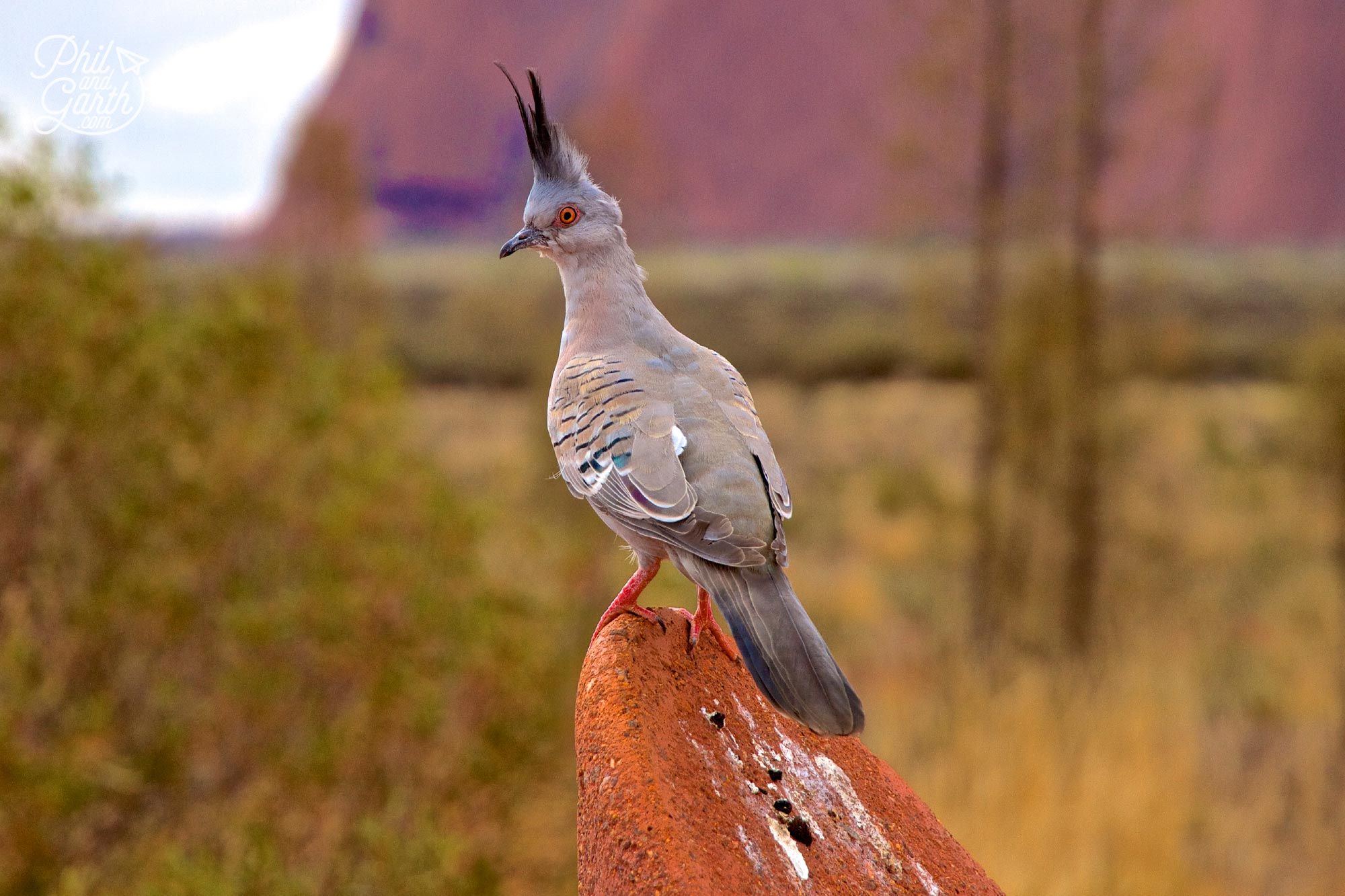
There’s lots of wildlife at Uluru, we saw lizards and this crested pigeon
Uluru-Kata Tjuta Cultural Centre
We then headed to the Cultural Centre for lunch, the restaurant there made us laugh, with just two items for sale, a generic pie and a cheese sandwich. After eating we sat and watched the centre’s video to Anangu people, Aboriginal culture and the sacredness of Uluru. The video is interesting but in desperate need of updating and cutting down from what felt like a 2 hour movie. The souvenir shop has some great Aboriginal artworks to buy, but a little bit too pricey for us to warrant the souvenir.
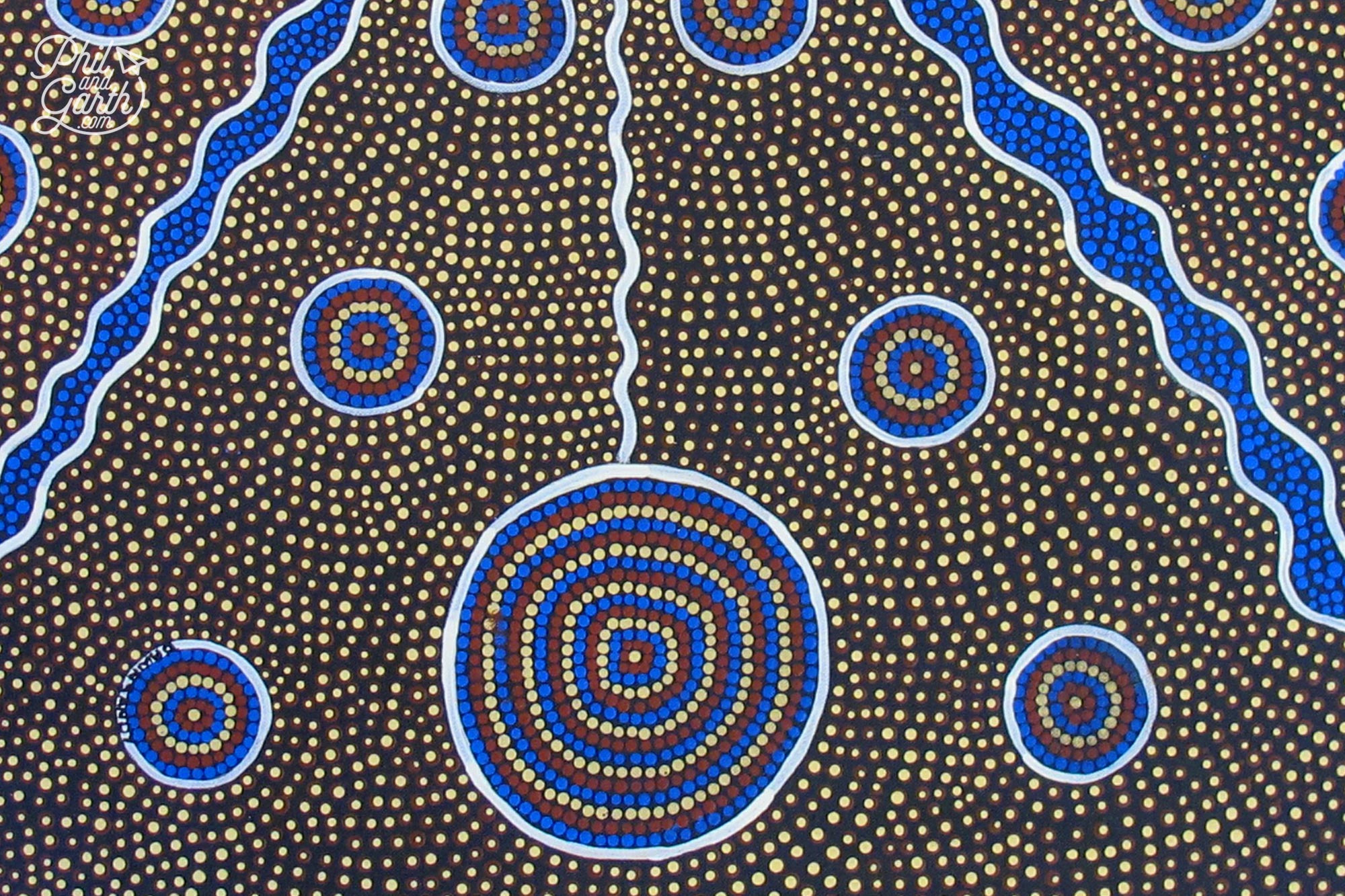
Aboriginal art, souvenirs, snacks and drinks can be bought from the Uluru Cultural Centre
Tips and Precautions from the Cultural Centre
- Hike in the cooler parts of the day, before 11.00am
- Walk with another person at all times
- Always stay on the designated tracks
- Familiarise yourself with the symptoms of heat stroke – such as dry mouth, clammy sweating, dizziness or nausea
- Temperatures at Uluru are considered extreme once it reaches 36ºC – certain tracks will be closed.
Hiking around Uluru
We spent the rest of the day hiking the suggested base walk around Uluru which takes 4 hours. Along the route we came across waterholes, birds and some tiny flowers. There’s also various caves where we read stories about the Elders of Uluru. Men had their own caves and the women had theirs. There are even some caves where you can get up close and see ancient cave paintings, the women’s kitchen caves still have the areas where food was ground and cooked in.
The reason the rock is red is due to the amount of iron in the rock itself. As it reaches the surface it oxides – basically goes rusty.
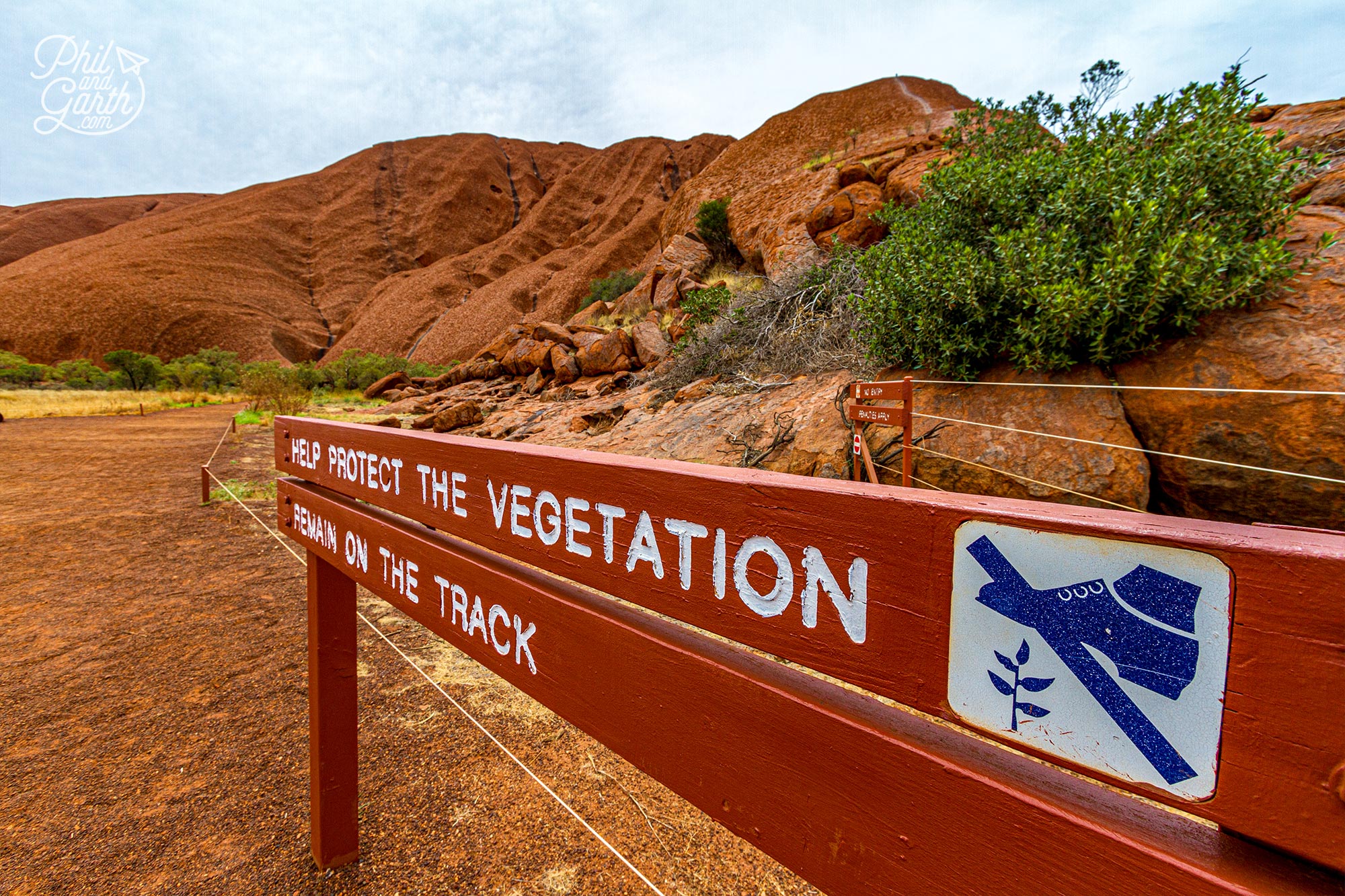
From the Mala car park take the 6 mile circular base walk around Uluru
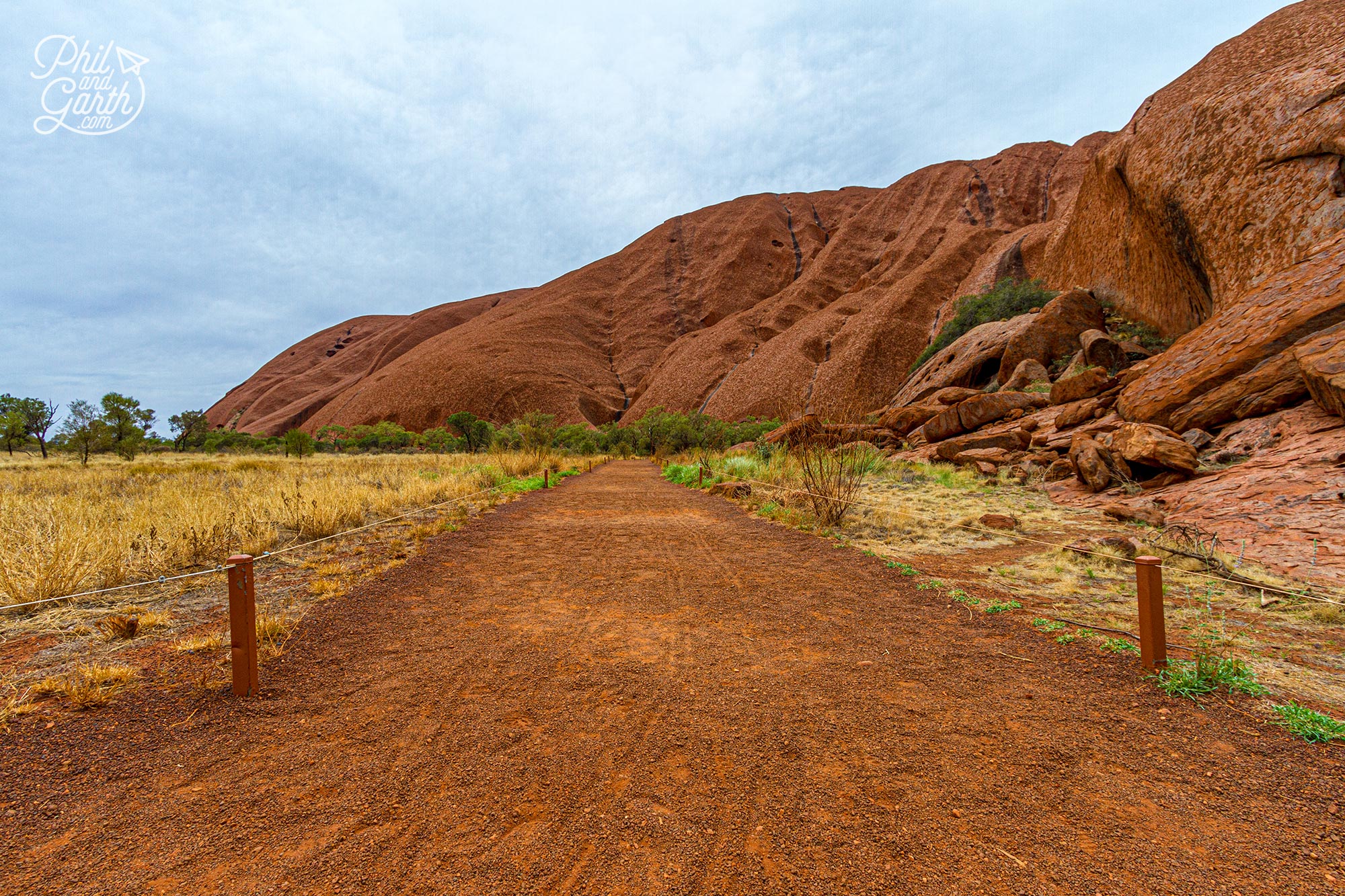
The start of the Uluru base walk
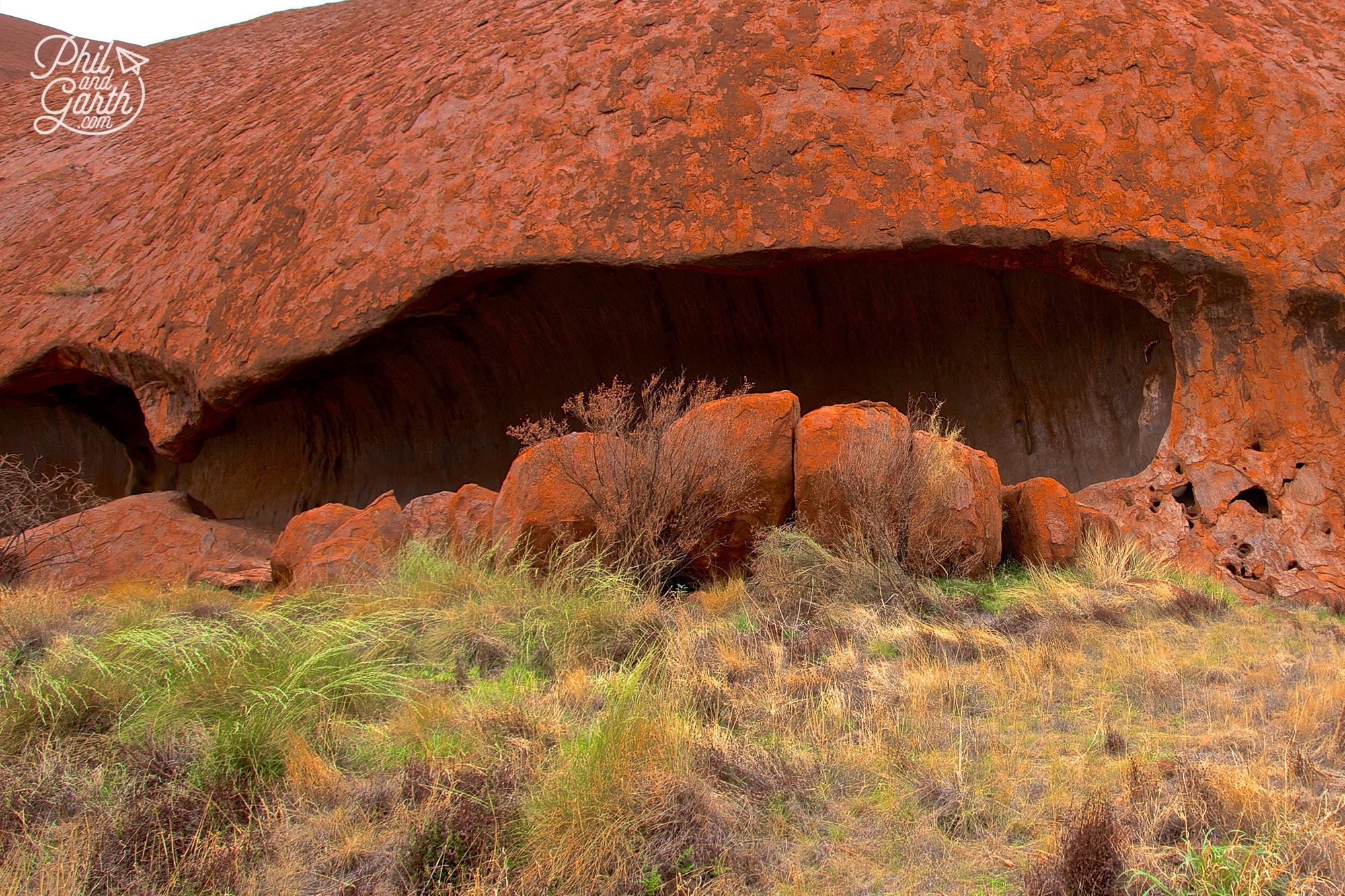
Kulpi Minymaku – The Kitchen Cave
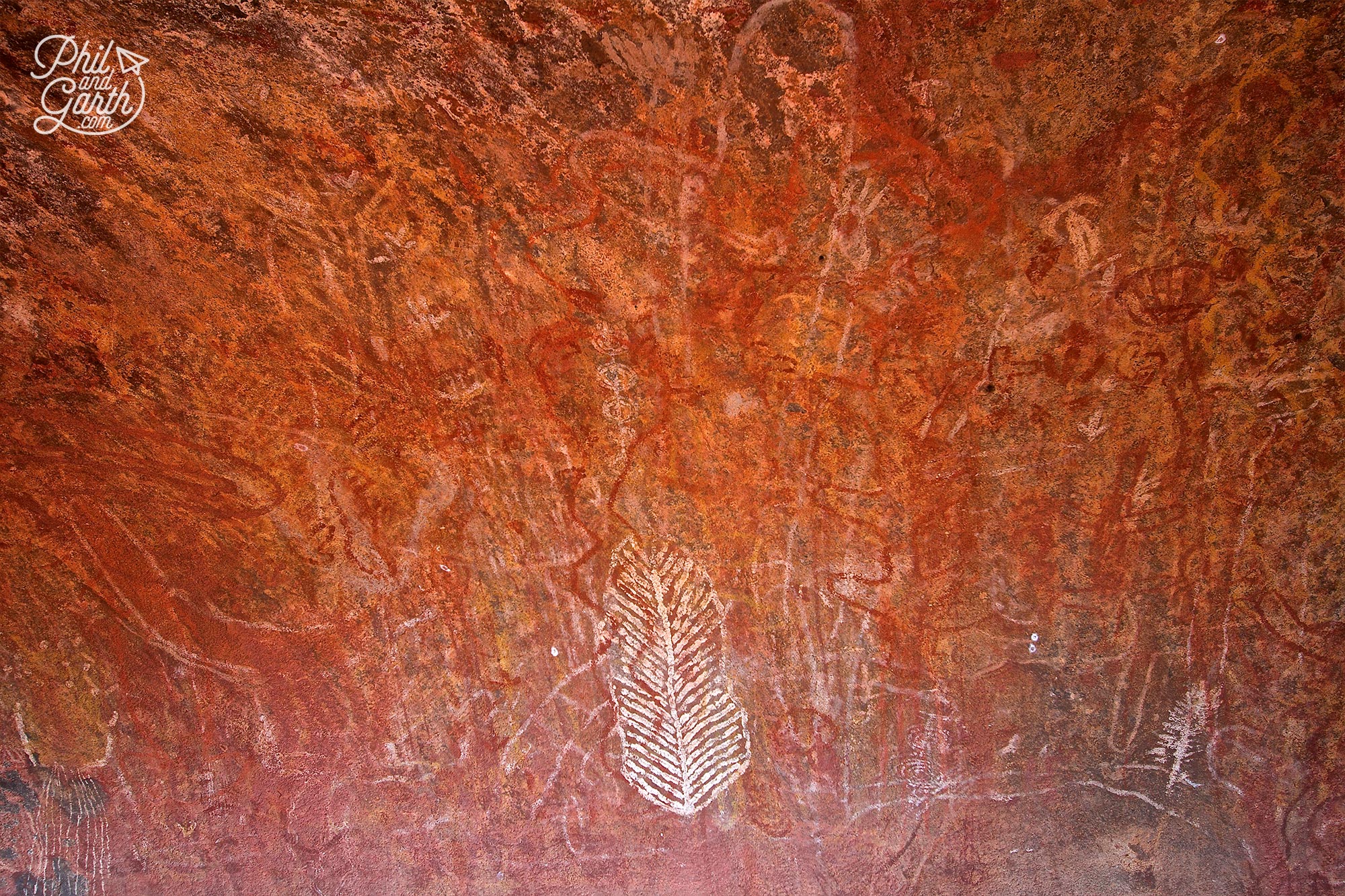
Ancient Aboriginal cave paintings
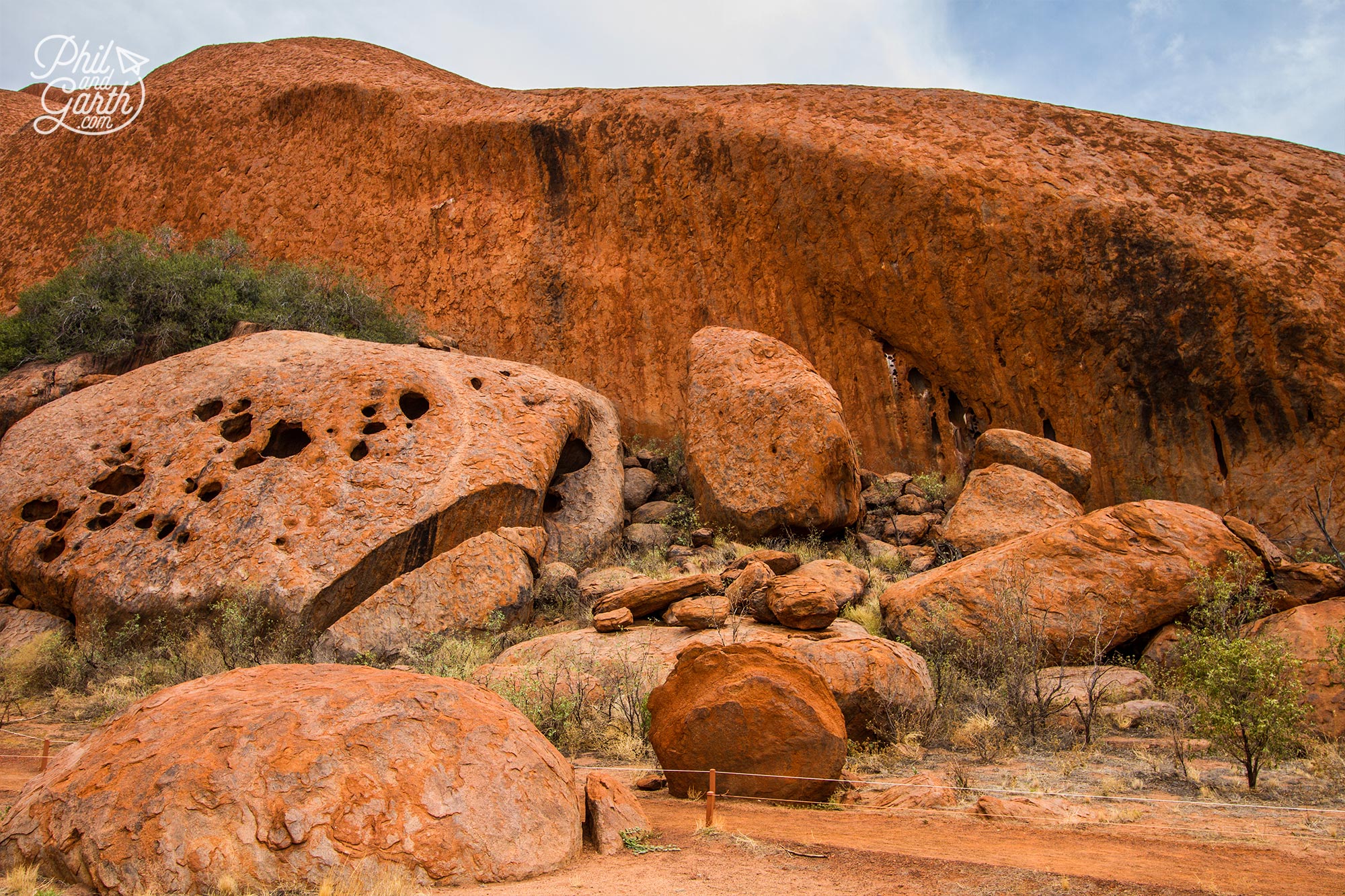
Rusty orange views of Uluru close up on the walk
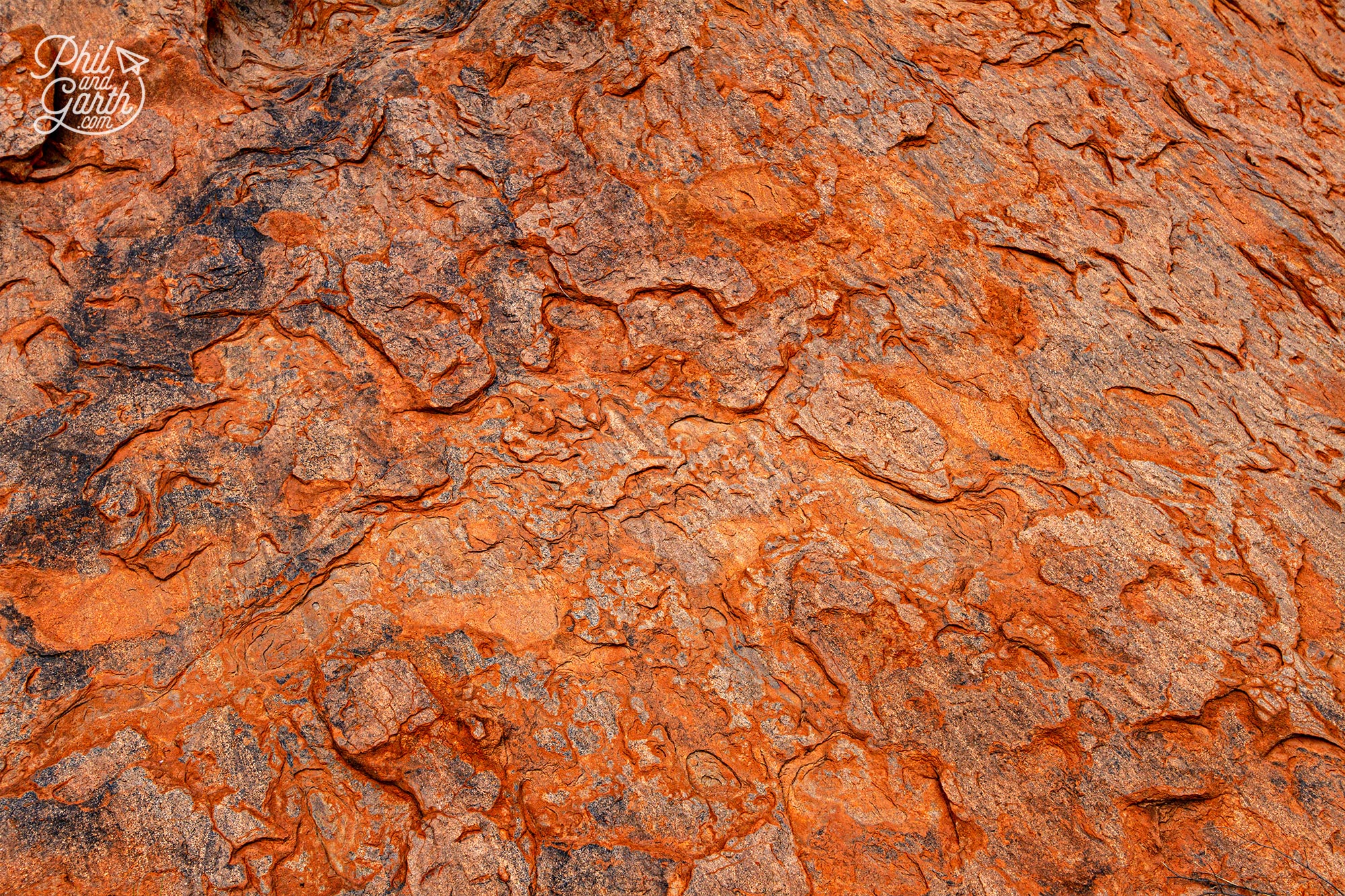
A close up of Uluru’s rough surface texture
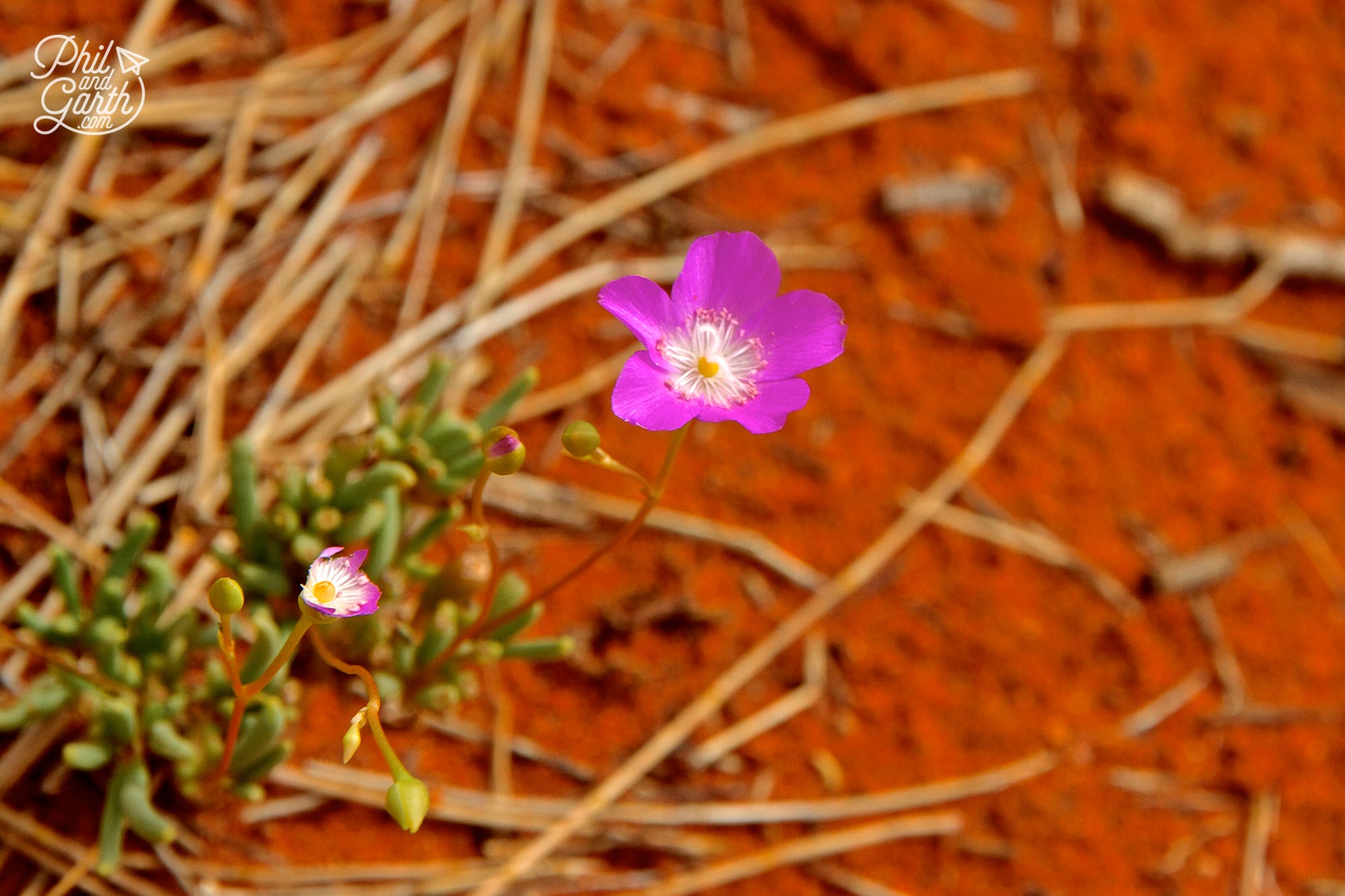
Delicate little wild flowers on our base walk around Uluru
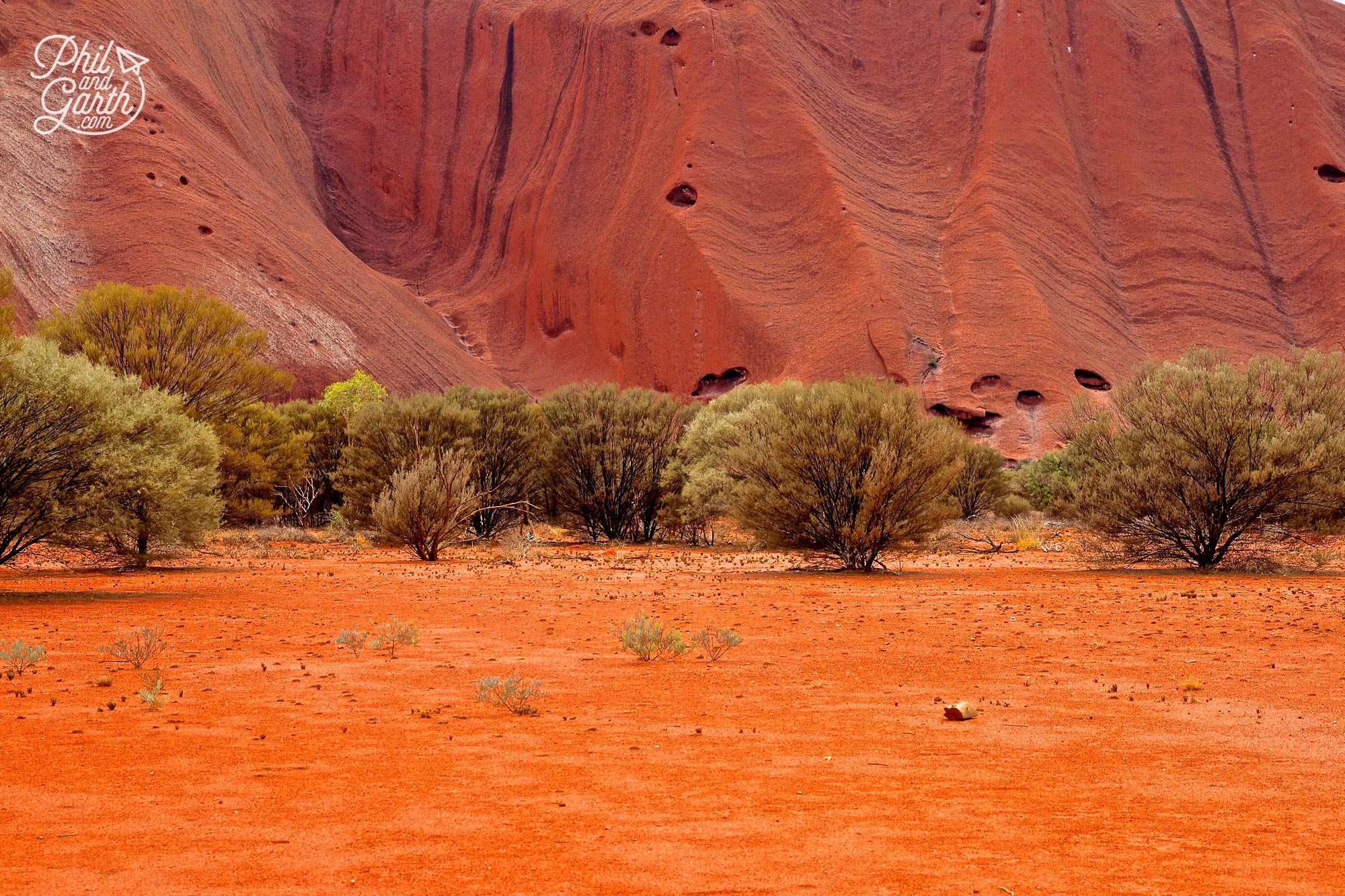
The fabulous colour palette or earthy reds and oranges change hues throughout the day
Photography is not permitted in certain sacred parts along the routes, these were clearly marked and we respected this. The area of the rock, that you can’t photograph tells a story which is passed down from mothers to daughters though the ages.
Climbing Uluru
Climbing and hiking to the top of Uluru was banned in October 2019. In the past hundreds of people had climbed and even died its strenuous hike to the top. It was considered controversial because the Anangu people asked tourists not to do this and respect their culture. They won their battle and now the sacredness of Uluru has been restored.
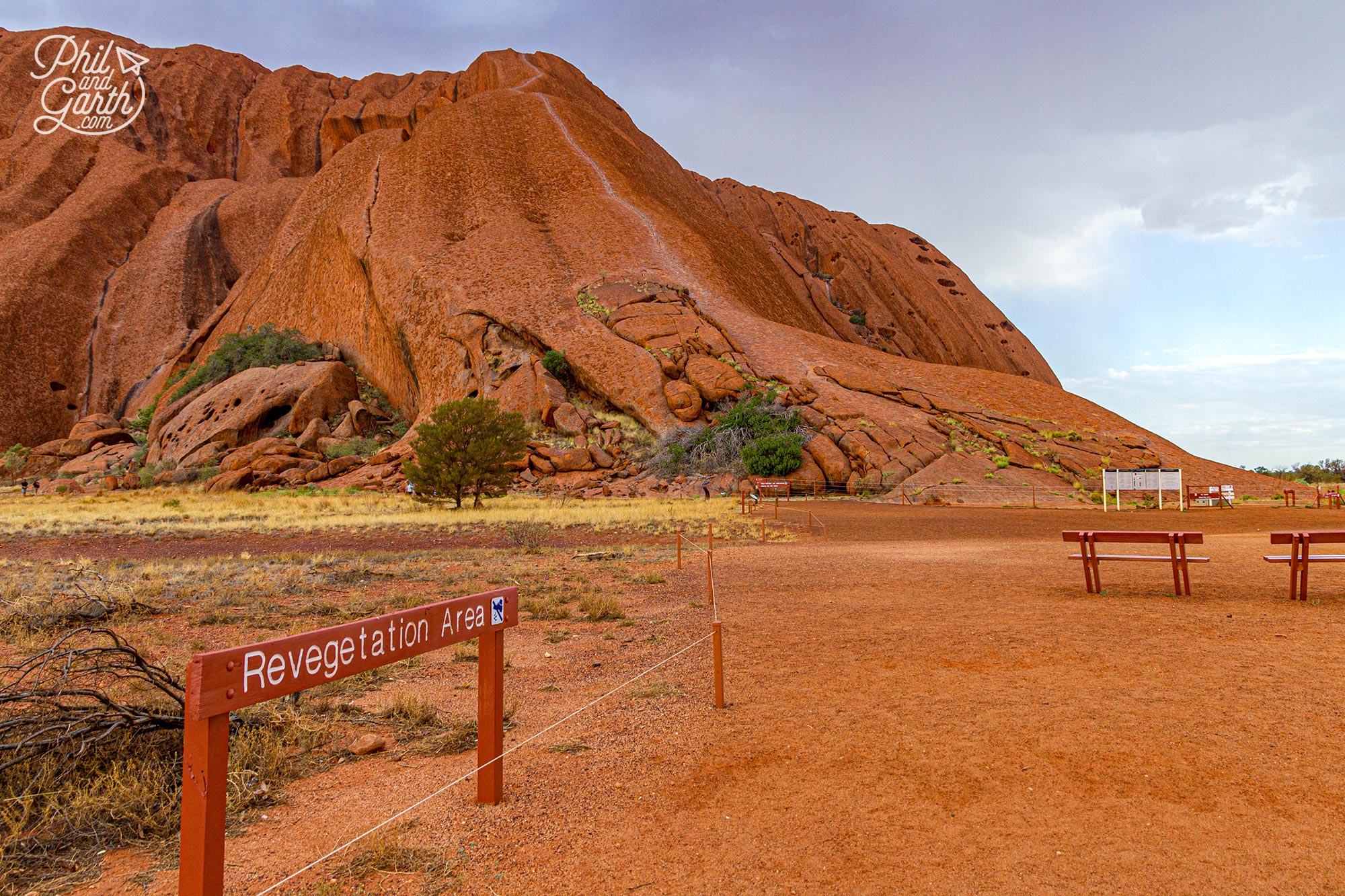
Climbing up to the top of Uluru was banned in 2019
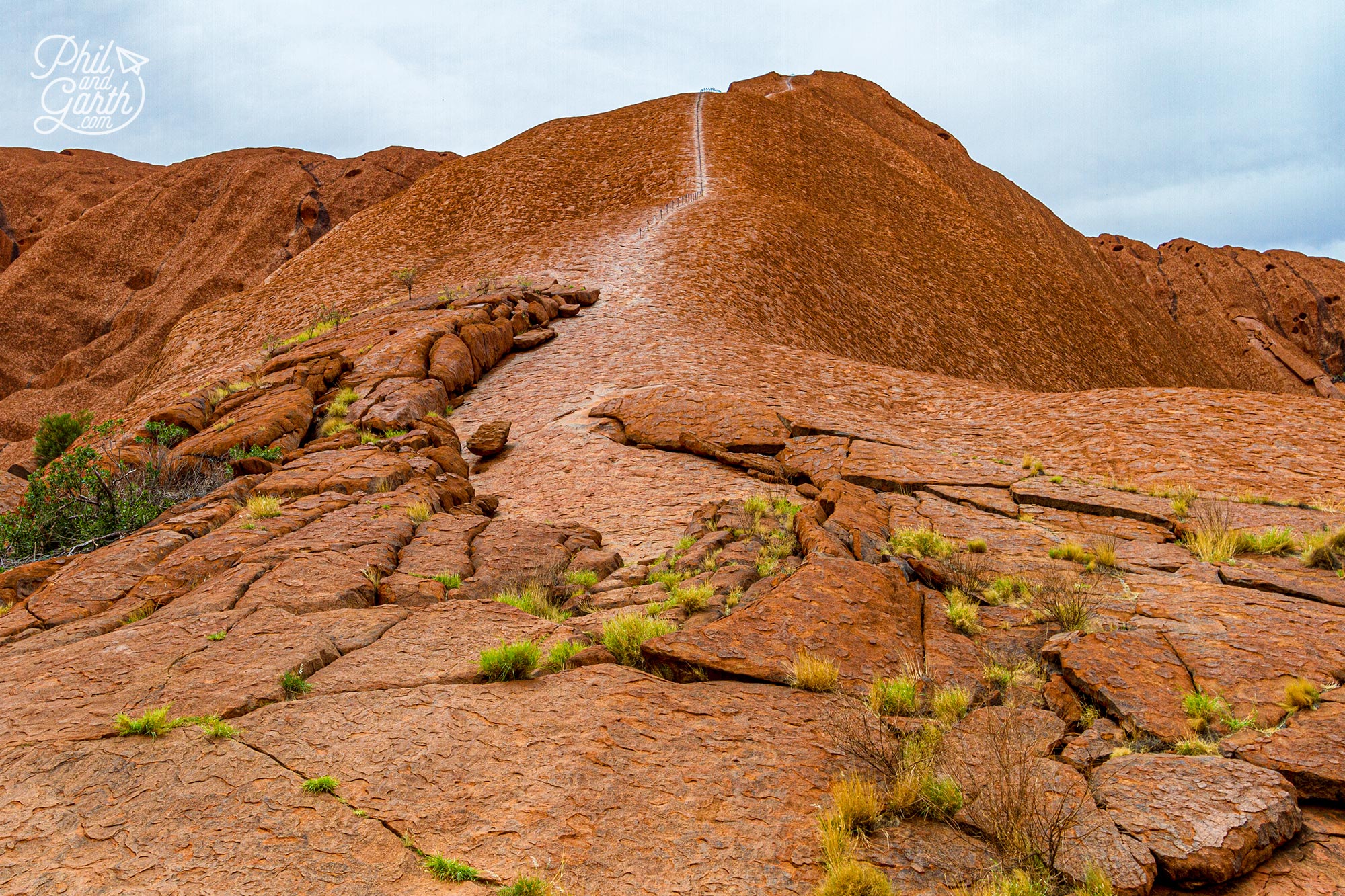
The old hiking path
Uluru’s Extreme Heat
Uluru is beautiful but it is a harsh environment in the heat. There are warning signs everywhere not to under estimate it. Heat stroke, exhaustion and dehydration are very real dangers. So make sure you wear a hat, cover yourself in suncream and wear good hiking boots too. Carry at least a litre of water per person per hour, and avoid sports and caffeinated drinks as these contribute to dehydration.
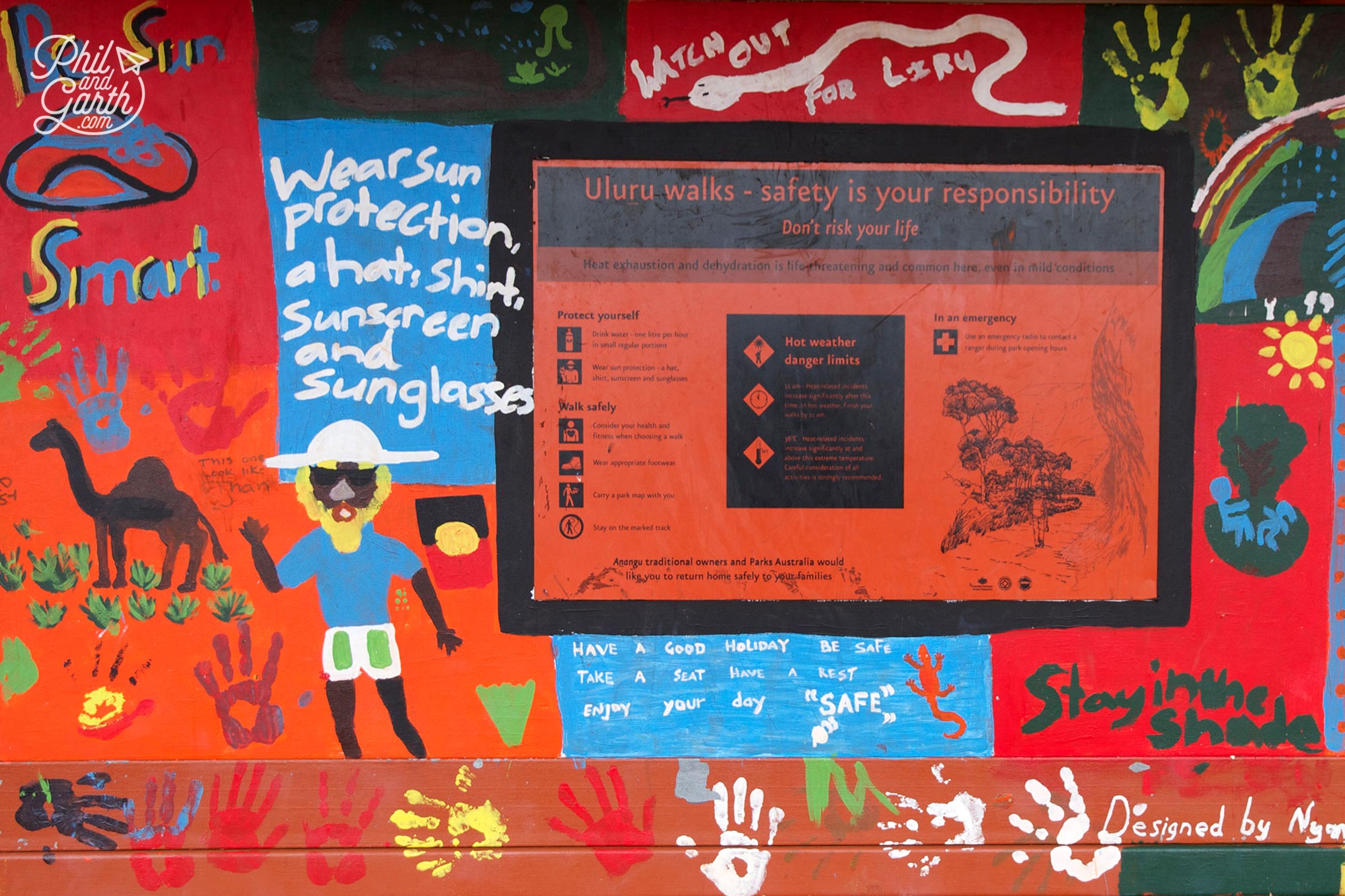
A sign warning of the dangers of the extreme heat at Uluru
Uluru At Sunset
Evening and it’s time to drive to the sunset viewing car park, this is a real highlight, as well as the perfect opportunity for taking the obligatory tourist shots of both of us of the sun setting on the rock. It’s just magical spending time watching Uluru change colours from orange to a blood red and its texture change from the the long shadows cast. We kept saying to each other, are we really stood in front of Uluru!? It was special and somewhat surreal too, we thought about how lucky we were to have been up close to this natural wonder and how far away from home we were at that exact moment. After it turned dark we headed back just in time for another Aussie barbie of kangaroo and crocodile sausages!
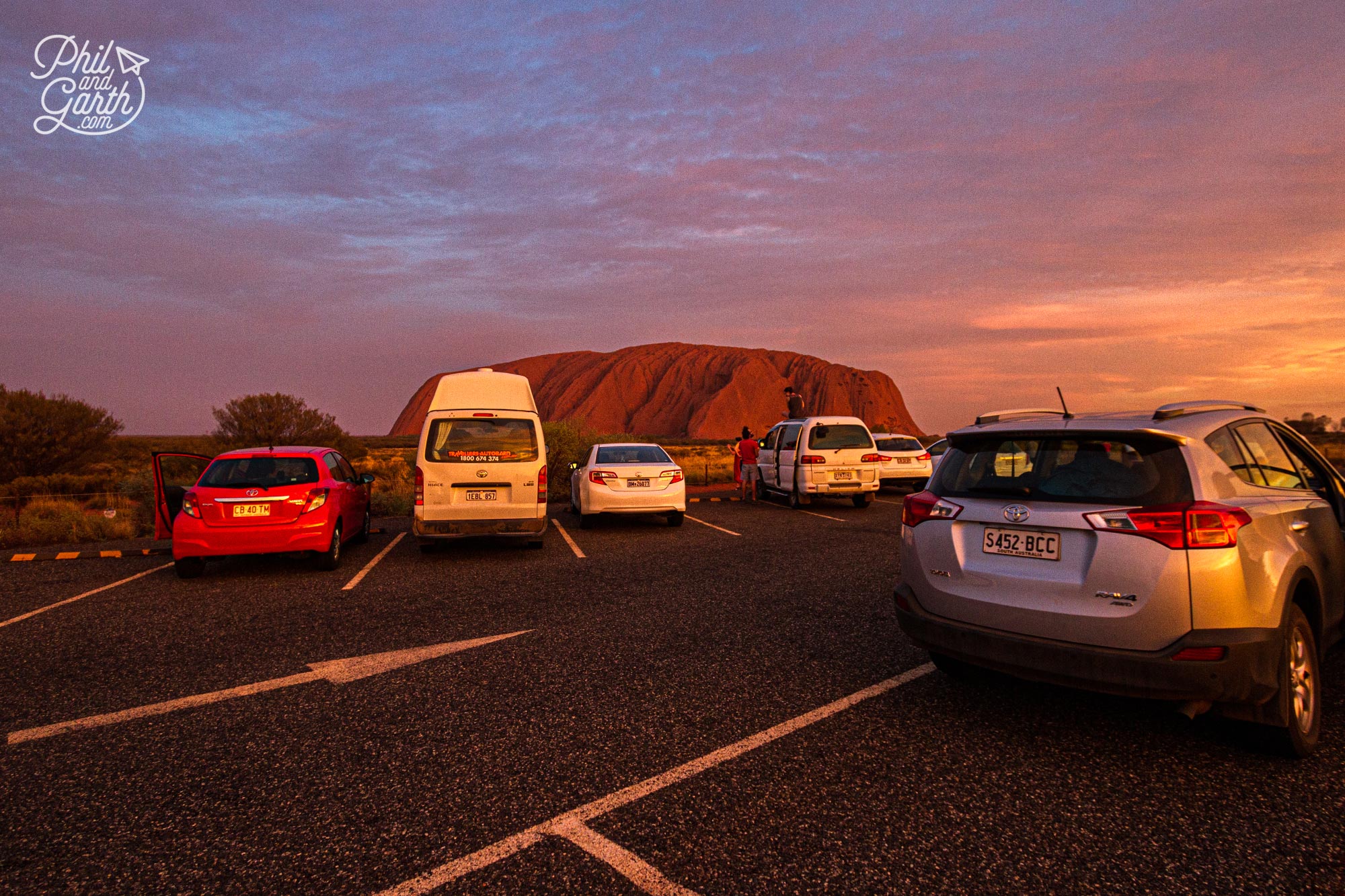
The sunset viewing car park
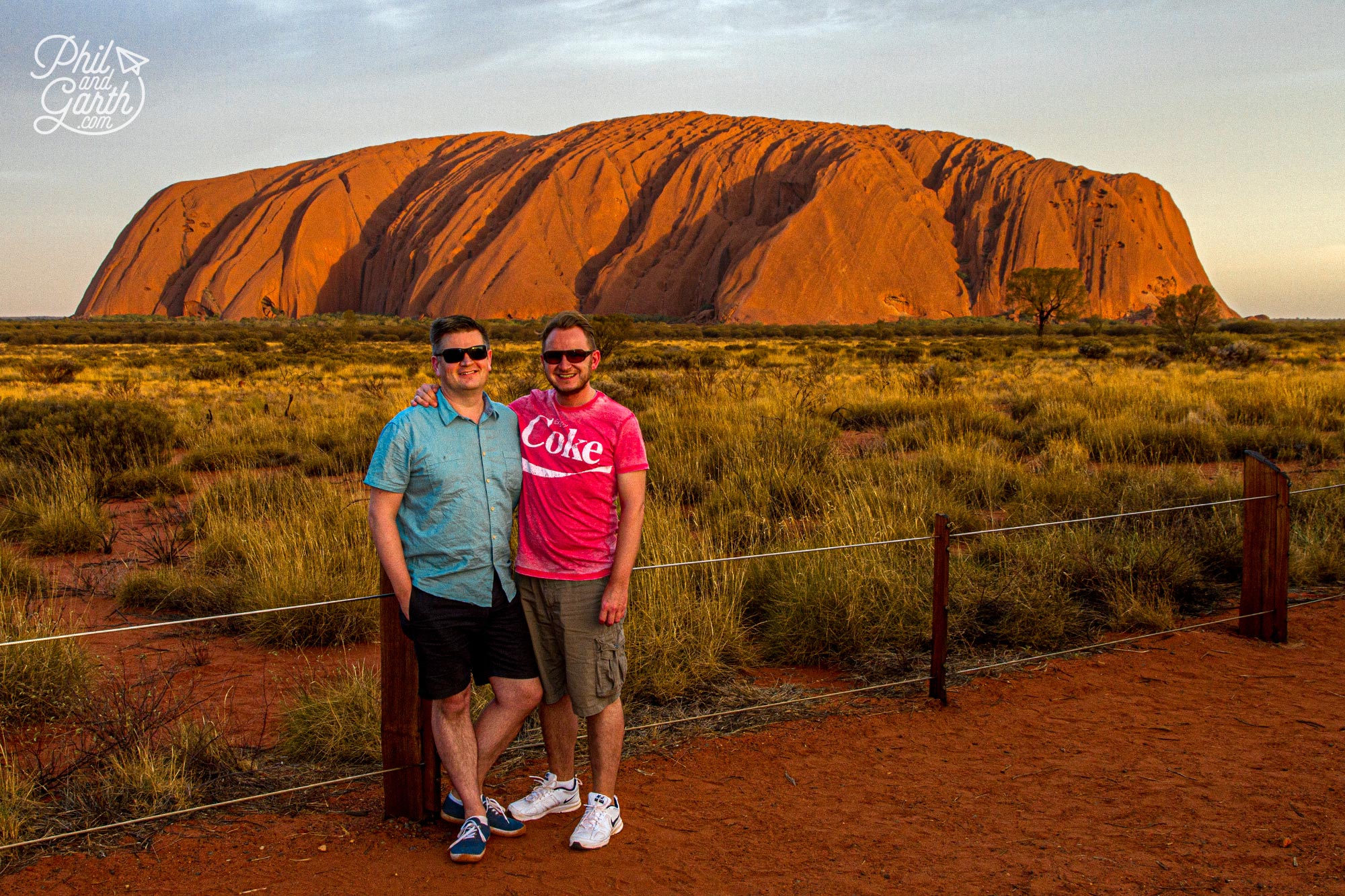
In the bag our classic sunset shot of Uluru
There were various stargazing tours on offer, which we definately would have taken up, but sadly it was too cloudy for our stay as there was a nearby cyclone developing, so we didn’t bother. The skies must be amazing at night as there is no light pollution, we both love stargazing so that would have been amazing to witness, but mother nature wasn’t playing ball. Many people went to see the similar beauty at sunrise, but we we’re too tired from all our travelling in Australia and somewhat lazy!
Day 2: Kata Tjuta – Uluru’s Neighbouring Rock
For the second day of our Uluru itinerary we visited the neighbouring rock, Kata Tjuta about 20 miles from Uluru. We never really realised just how striking and impressive Kata Tjuta would be. It’s meaning is ‘many heads’ because of its huge domed rocks. We hiked into one of the canyons created from the boulders, it’s terrain is rocky and uneven, so quite different to the red dust like Uluru walks. Remember to take plenty of water and your face nets! We only saw a couple of people during our time there, magical.
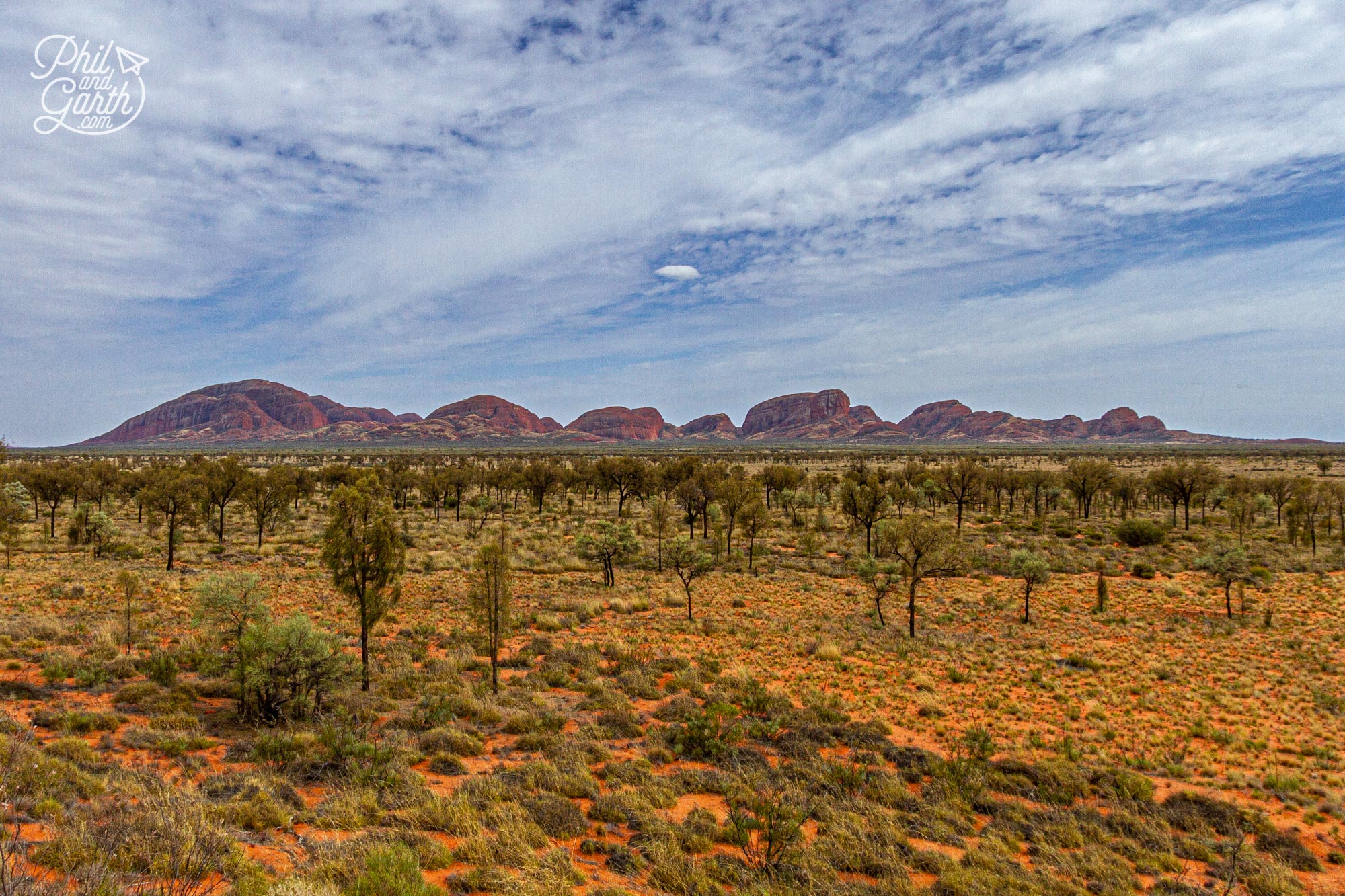
Kata Tjuta is also known as ‘The Olgas’
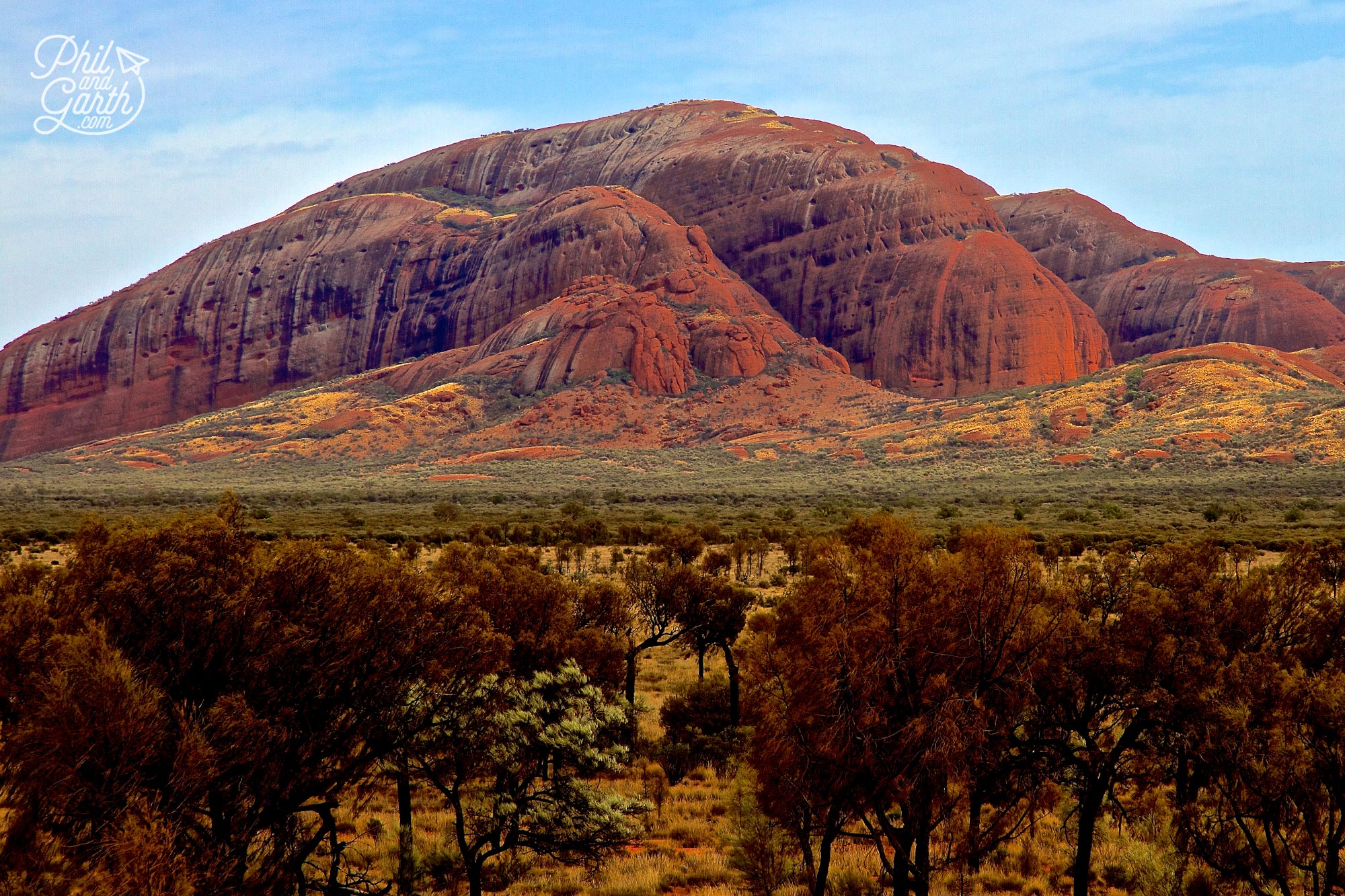
Kata Tjuta is equally as impressive as Uluru
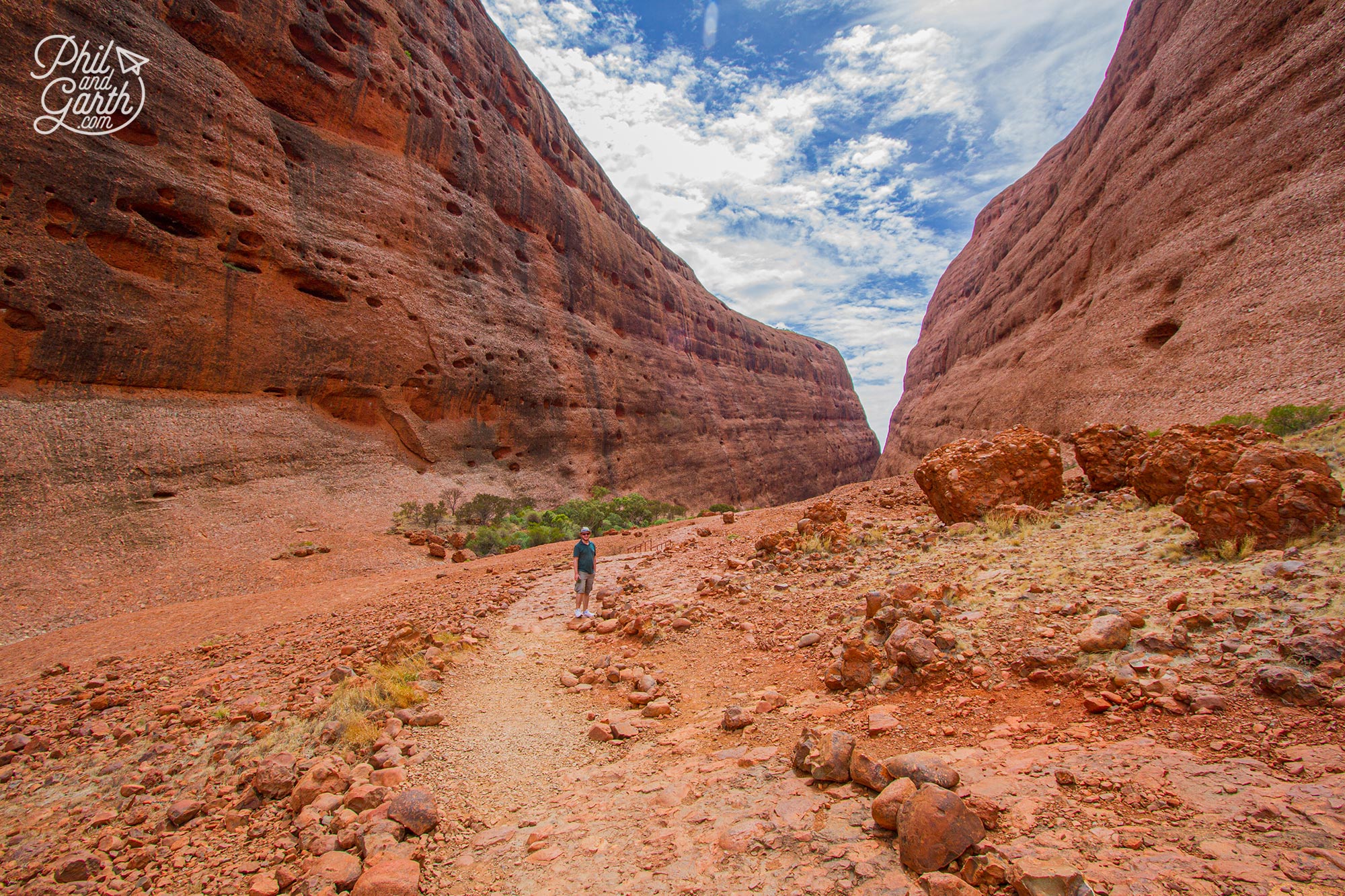
Garth walking through Kata Tjuta’s Walpa Gorge
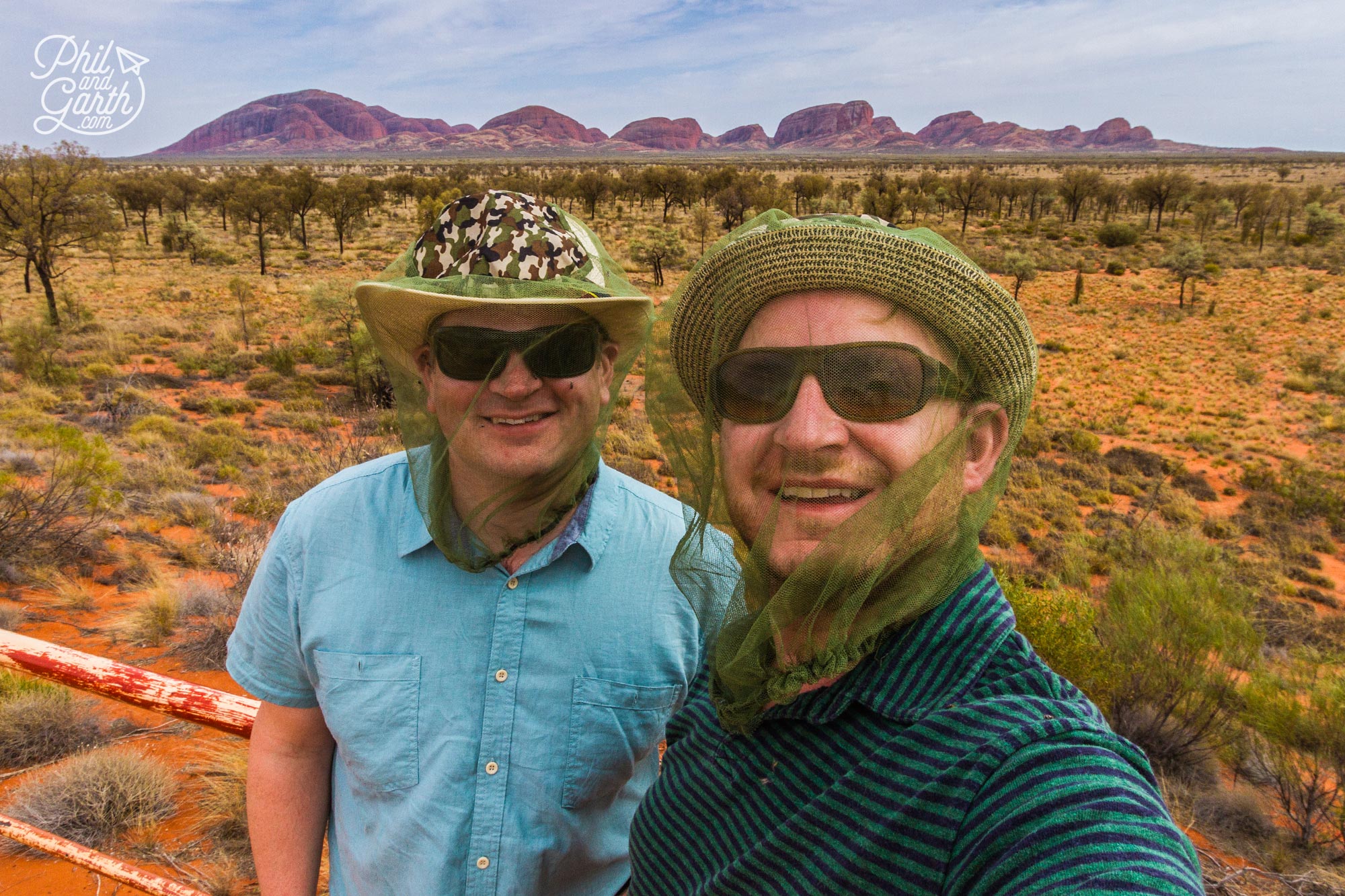
Our attractive face nets at a Kata Tjuta viewpoint
We filled our bags with quite a few bottles of water, and so glad we did, as we got through all of them. Dehydration is a real risk here, so don’t be caught out as the area is so isolated.
Uluru Practical Information & Useful Advice
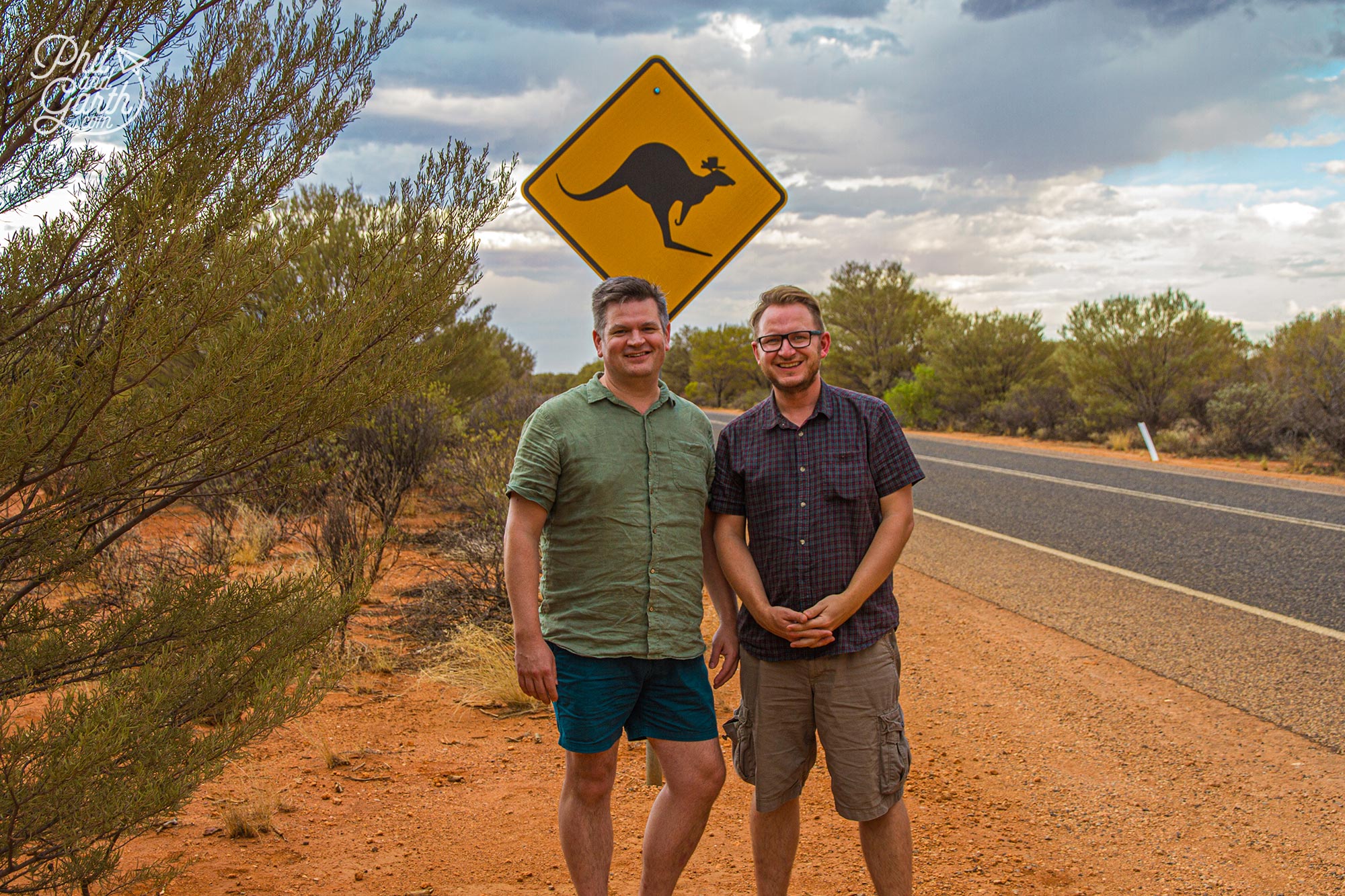
Phil & Garth’s Top 5 Tips for Uluru Kata Tjuta National Park
Phil & Garth’s Top 5 Uluru Travel Tips
- Tip #1: Remember those flies we told you about – You must buy face nets before you go, just incase local shops have run out!
- Tip #2: If you avoid peak season (June – Sept) and go in summer like we did, prices are much lower but you pay the price with flies! and the heat!
- Tip #3: Some people fly in and out the same day, we don’t suggest you do this, as it’s just not enough time to see everything on offer – you need at least 2 days in Uluru.
- Tip #4: When taking those must have sunset shots, wait another half hour after the sun has set, as we got some of best shots then.
- Tip #5: Food is very expensive, but the local supermarket we went to in Yulara isn’t.
Uluru FAQ
- What is the airport code for Uluru? AYQ – Ayers Rock Airport.
- What time zone is Uluru? GMT +9:30. Australian Central Standard Time.
- What currency is used in Uluru? Australian Dollar (symbol: $)
- What language is spoken in Uluru? English
- What is the population of Uluru? 1,000
- What number should I call in an emergency? Call 000 for police, ambulance or fire.
- What plug type is used in Uluru? Plug type I. 3 flat pins in a triangular pattern. Voltage is 230 volts, 50 hertz.
- When is the best time to visit Uluru? June to September.
- When is the worst time to visit Uluru? December to February (Australian summer) it’s very hot and humid.
- What is Uluru famous for? Ancient sandstone monolith.
- What is the history of Uluru? The Anangu people have lived around Uluru for more than 30,000 years.
- What are the 5 must see sights of Uluru? Uluru, Kata Tjuta, Cultural Centre, Uluru Kuniya walk & Walpa Gorge walk.
- What is the local food in Uluru? Kangaroo sausages are popular.
- What is the best way to get around Uluru? You will need to hire a car.
- What is a fun fact about Uluru? Uluru is estimated to be 600 million years old, wow.
- What movies have been filmed at Uluru? Young Einstein (1988) was filmed here.
- Where is the best photo spot in Uluru? Sunset Viewing Area.
- Where is a hidden gem in Uluru? Mutitjulu Waterhole.
- What is the best souvenir to buy in Uluru? Buy a piece of Anangu art from the cultural centre.
How We Did It
- We did a self-guided tour of Australia. We paid for internal flights with Quantas to Ayers Rock via Alice Springs.
- We visited in January, ridiculously hot and humid!
- We used the Uluru-Kata Tjuta National Park official website for the latest travel information.






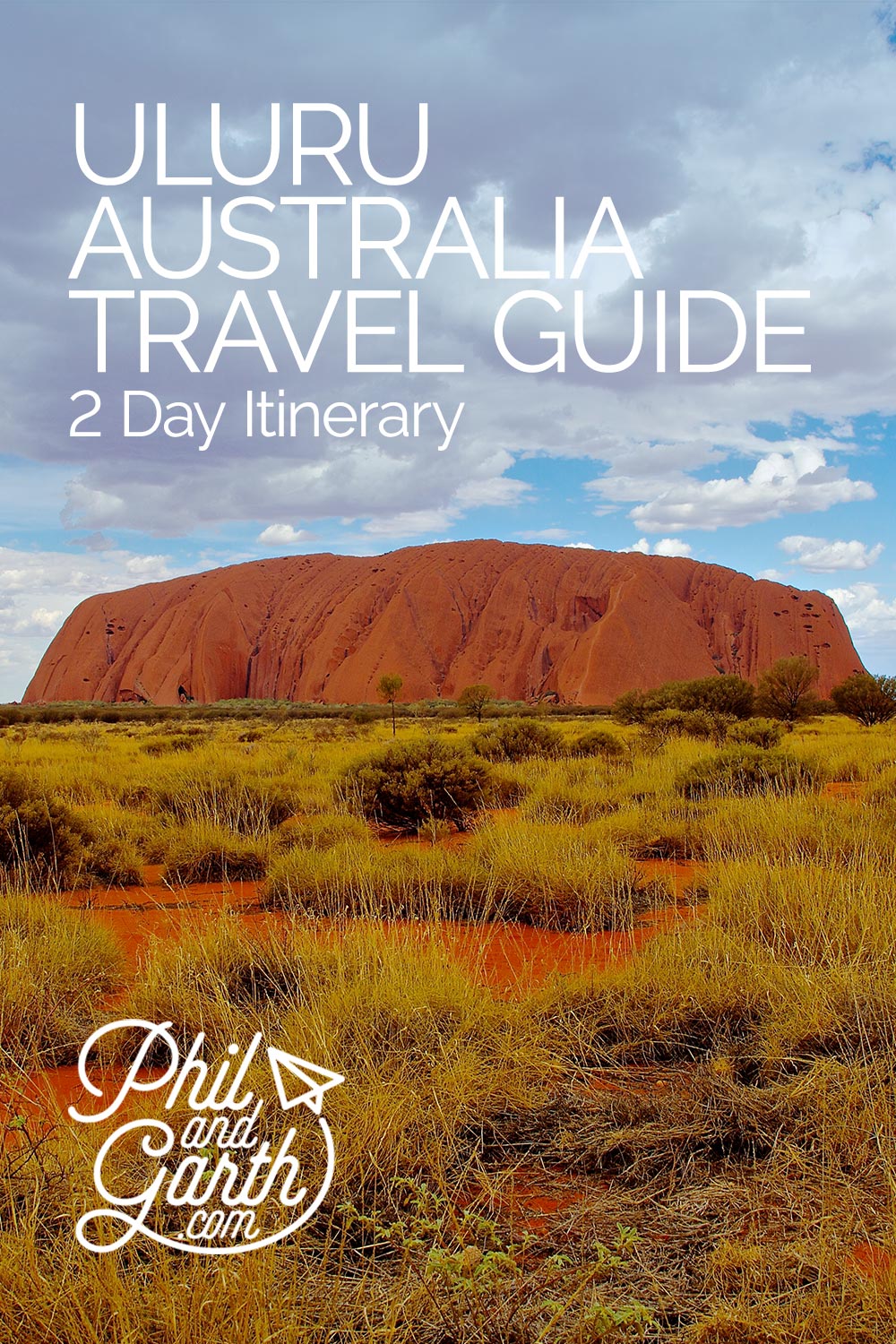
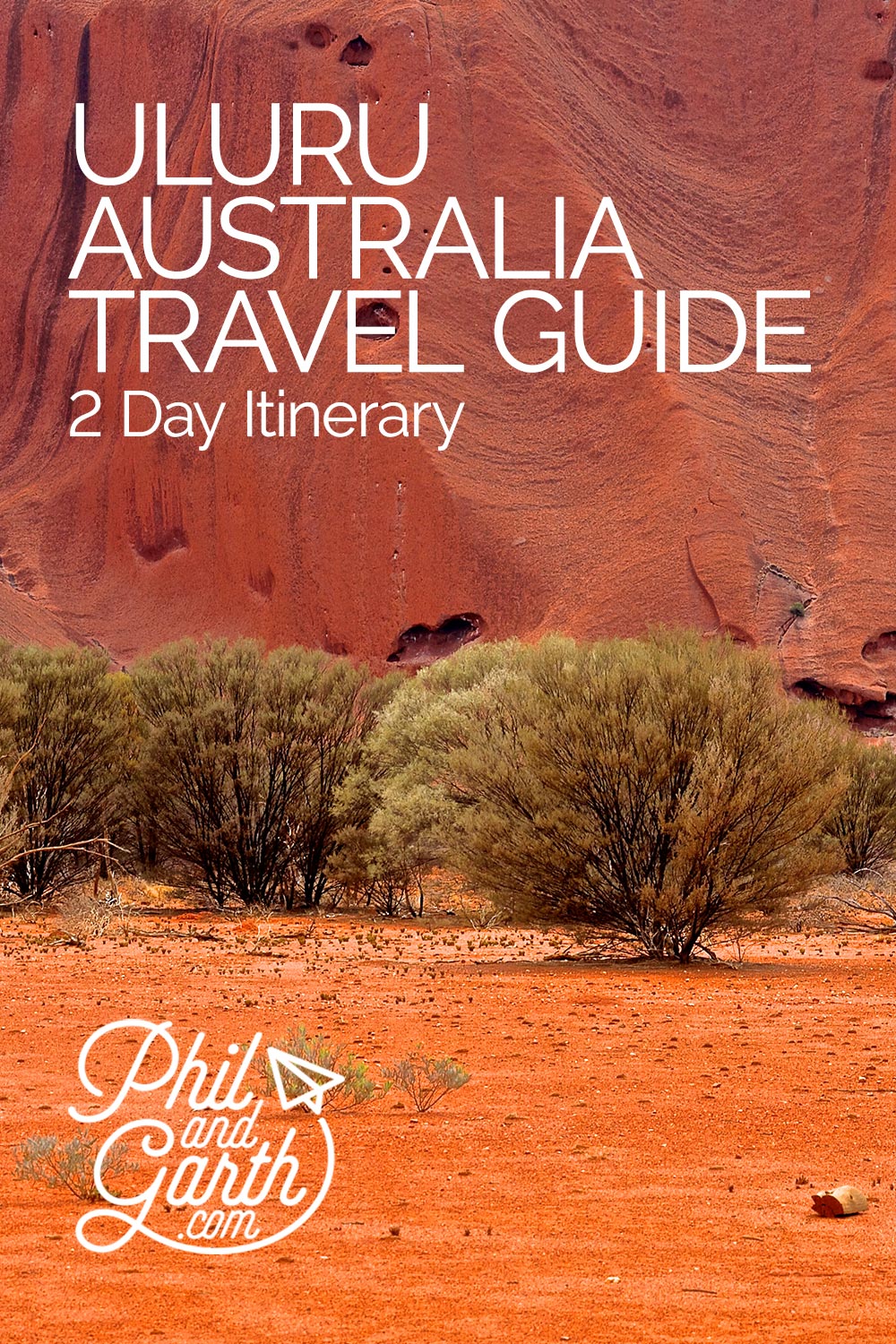
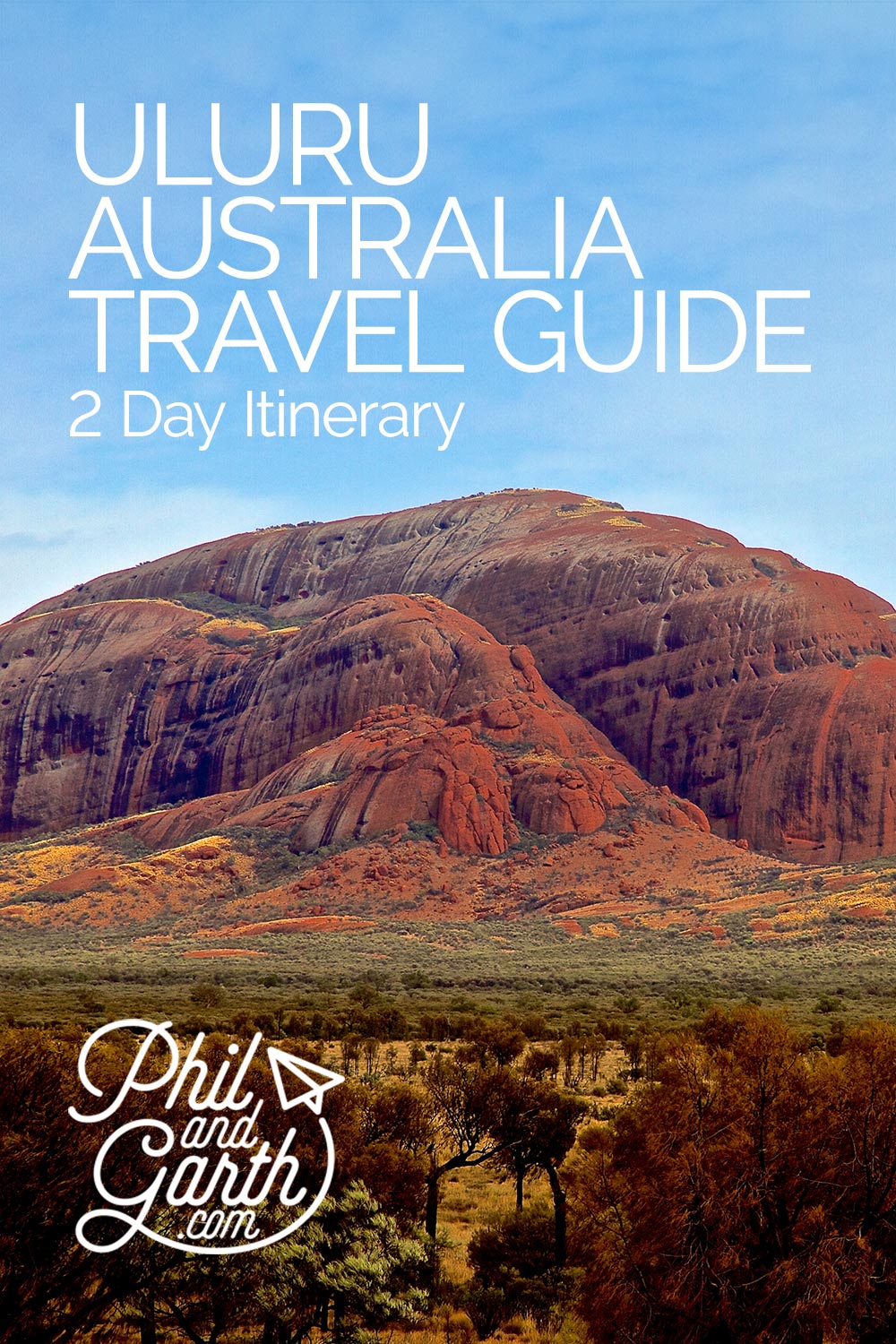
12 comments
Lovely post and beautiful photos. Thanks.
Thanks for all the info. I really want to go there again. Took our kids to Uluru by Campervan from Adelaide in May 2002. It was the best trip of my life. We drove into Uluru and stayed at the resort you stayed at. But some miles before it we stopped at a site – it had a cattle ranch style pub with tin roof, australian animals to look at and a place to put up a tent or camper. We didn’t stay as we had booked in to the resort. I would also love to have camped by Uluru with aborigines. My kids were young 3, 5 and 7 and reckon it was the best trip ever.
Uluru comes across as a great place to commune with the great outdoors, never mind the flies! The sunsets and sunrises seem really magical, I reckon it would be a haven for hiking as well.
Haven’t been to Australia since I was a kid I so want to go back and spend about a month or so. I’m all about the hiking for sure and Kata Tjuta looks like a perfect place. I always love the photos you guys take too! I agree about not going during peak seasons as well.
Ah the memories – Australia is by far my favourite place in the world and I had a great time travelling around the country in a camper van with my friends. We went to Uluru in July and the weather was warm during the day but absolutely freezing at night! It was a fantastic experience even though I liked Kata-Tjuta more!
Wow, what an exciting adventure. The photos are great, love the do it your self BBQ and especially the nets. What an interesting color of sand. Looks like a beautiful place to take pictures. Great Tips and thanks for sharing such a great adventure.
I haven’t been to Uluru since we went in high school for a school trip, but seems a lot of it is as I remember. We camped at Yulara from memory. It definitely is in the middle of nowhere. Wonderful photos as always guys. #FeetDoTravel
I know you said you can’t comprehend the full beauty of it in pictures, but your pictures really are stunning!! I’ve always wanted to visit here – hopefully I’ll make it one day!
Oh this took me right back to my time here! I was part of a bus tour group and we had so much fun – we went in November and I don’t recall flies in that month – phew! When you are here, you can really see why it’s called the “red centre” so I love your photo which depicts this so well. Sadly for my visit it was cloudy so the sunset/sunrise shots weren’t as spectacular as yours, however it brightened up for my walk around Uluru – it is fantastic isn’t it! We were told that the locals have a name for the tourists who walk, they are called “mingas” which means ants, apparently that’s what they look like walking in a line from a distance lol. So glad you have also experienced one of life’s stunning natural phenomenon 🙂
Great photos and detailed post guys. Just out of curiosity what camera do you use?
We’ve got a few cameras including a cheap point and press underwater one which is great fun, we used our Cannon 7D to take the pictures in Australia.
Great stuff – it really shows in the pictures. I’ve been living in Australia on and off for a while and can certainly relate to the flies. The summer months are the worse! The graveyard also is a storage depot for most major airlines operating n Australia. It’s the only one in Australia.